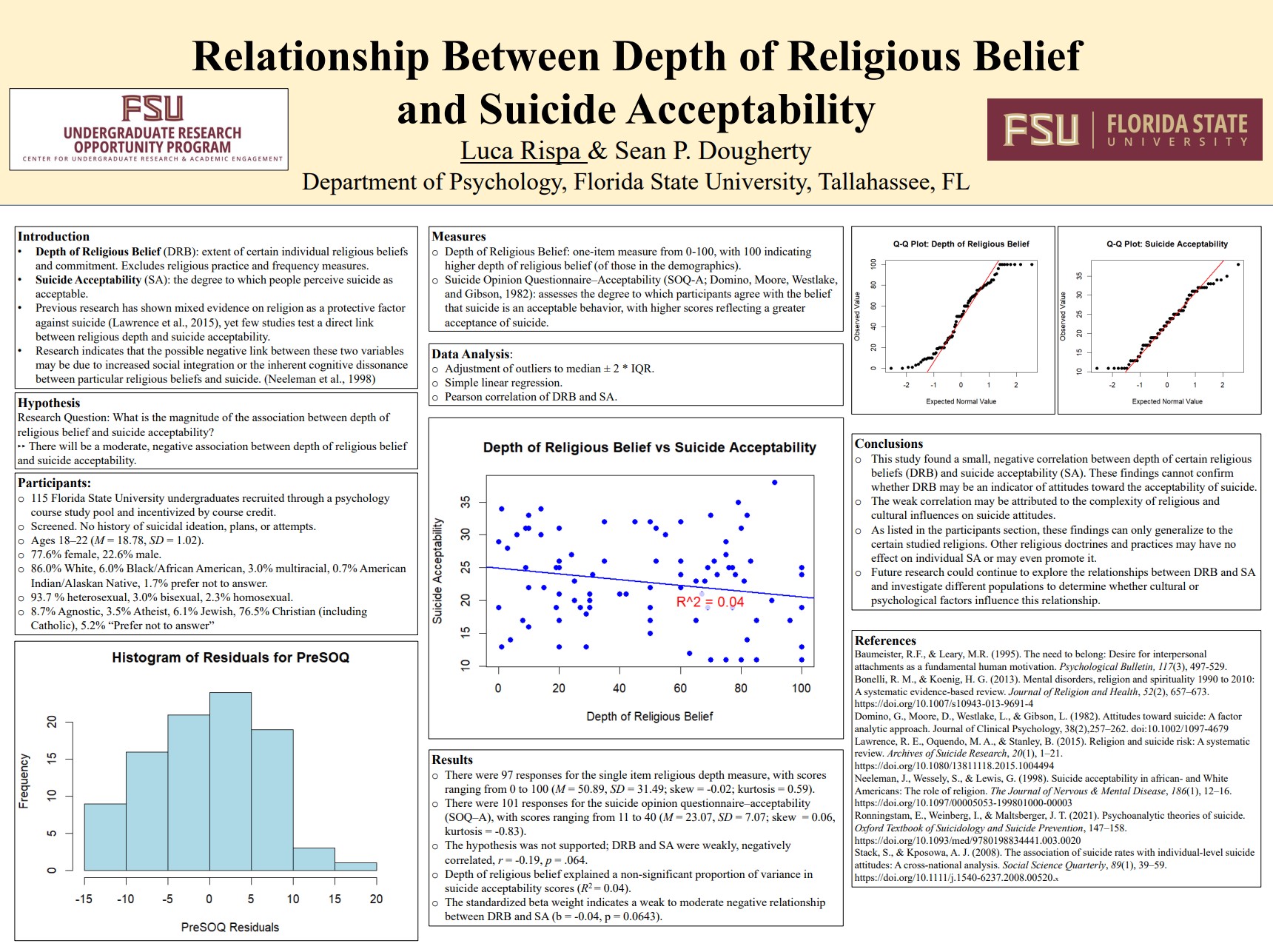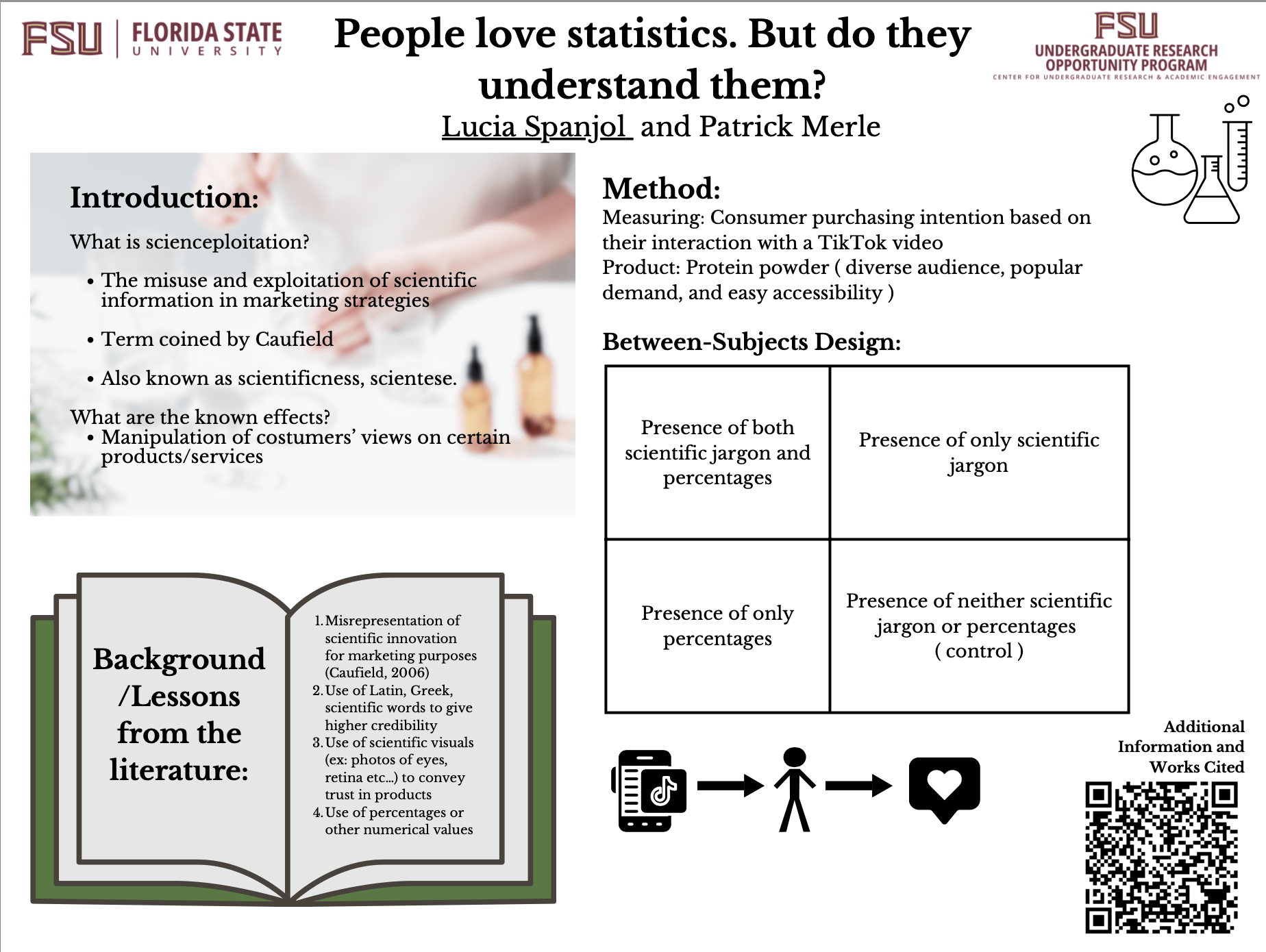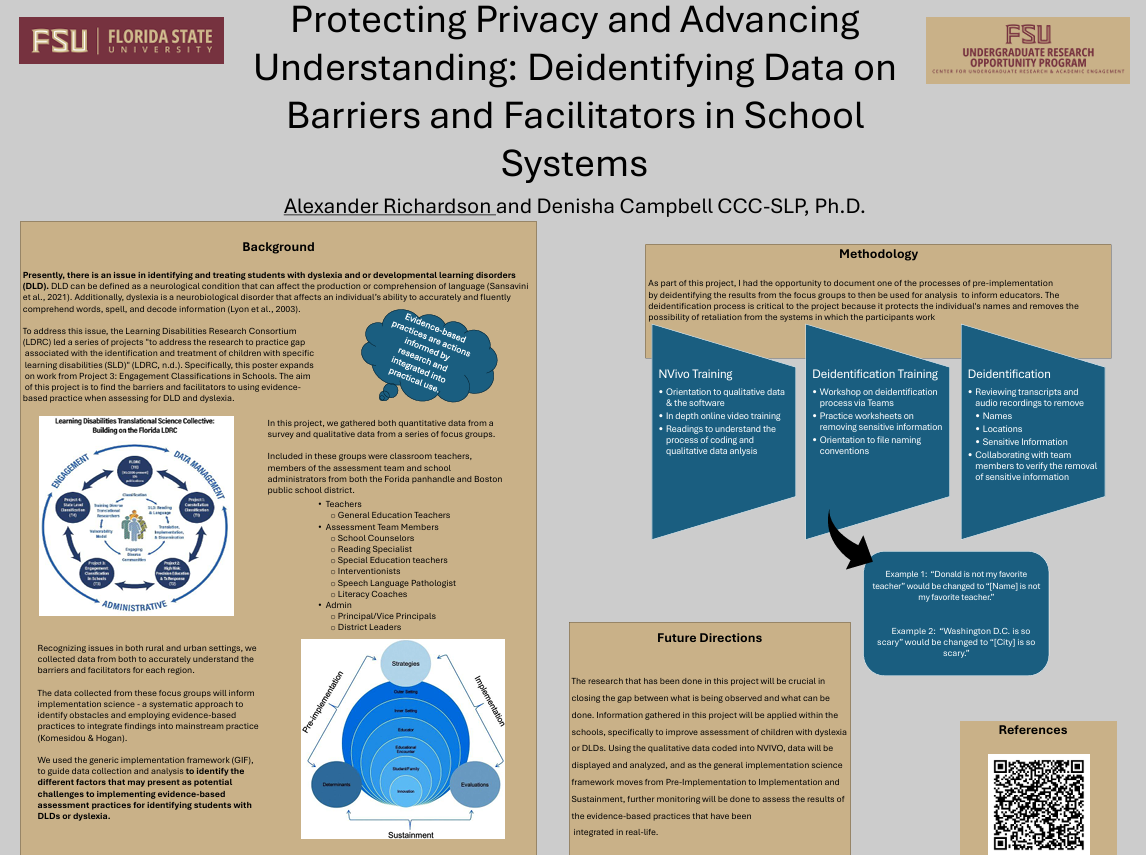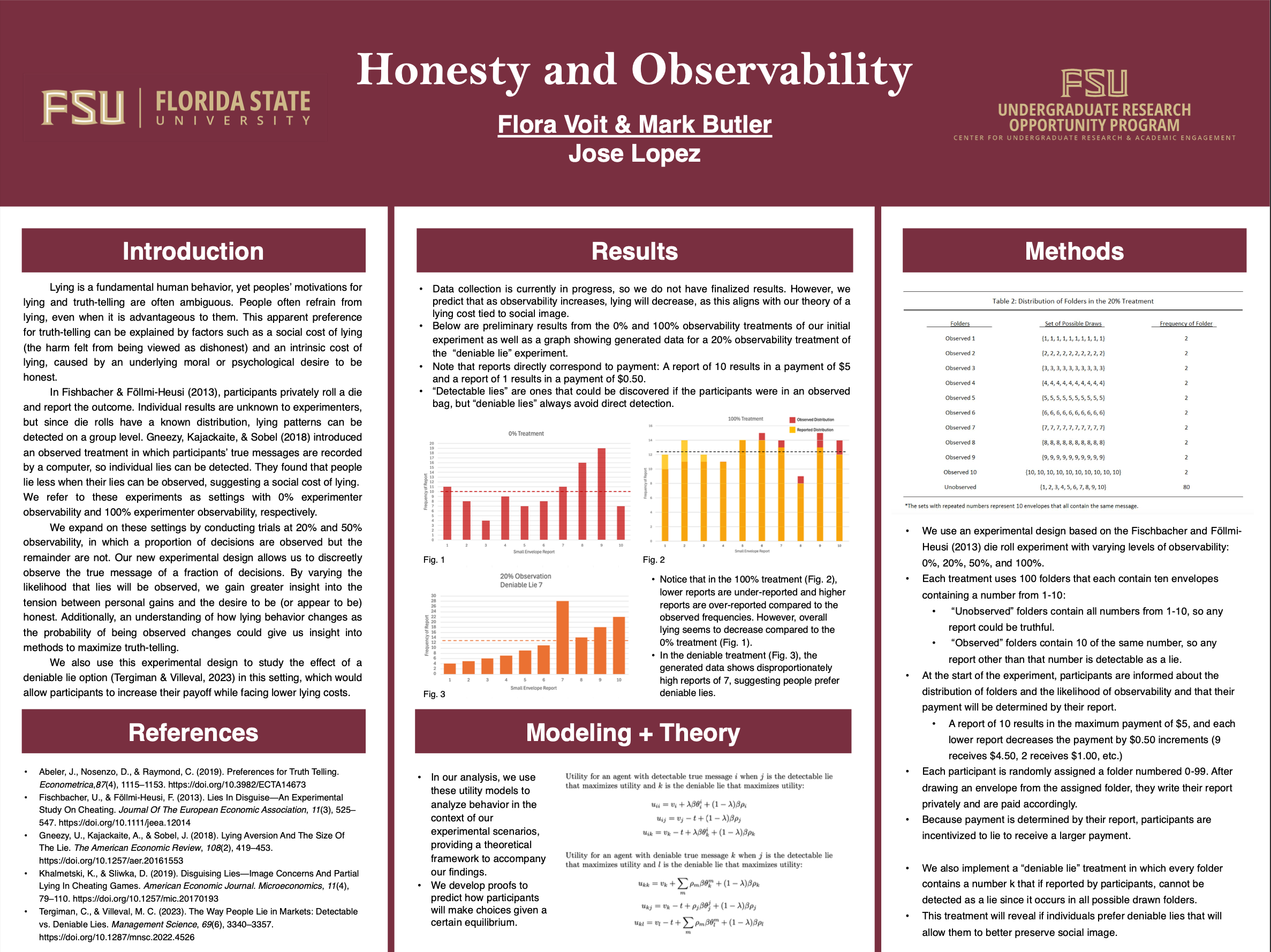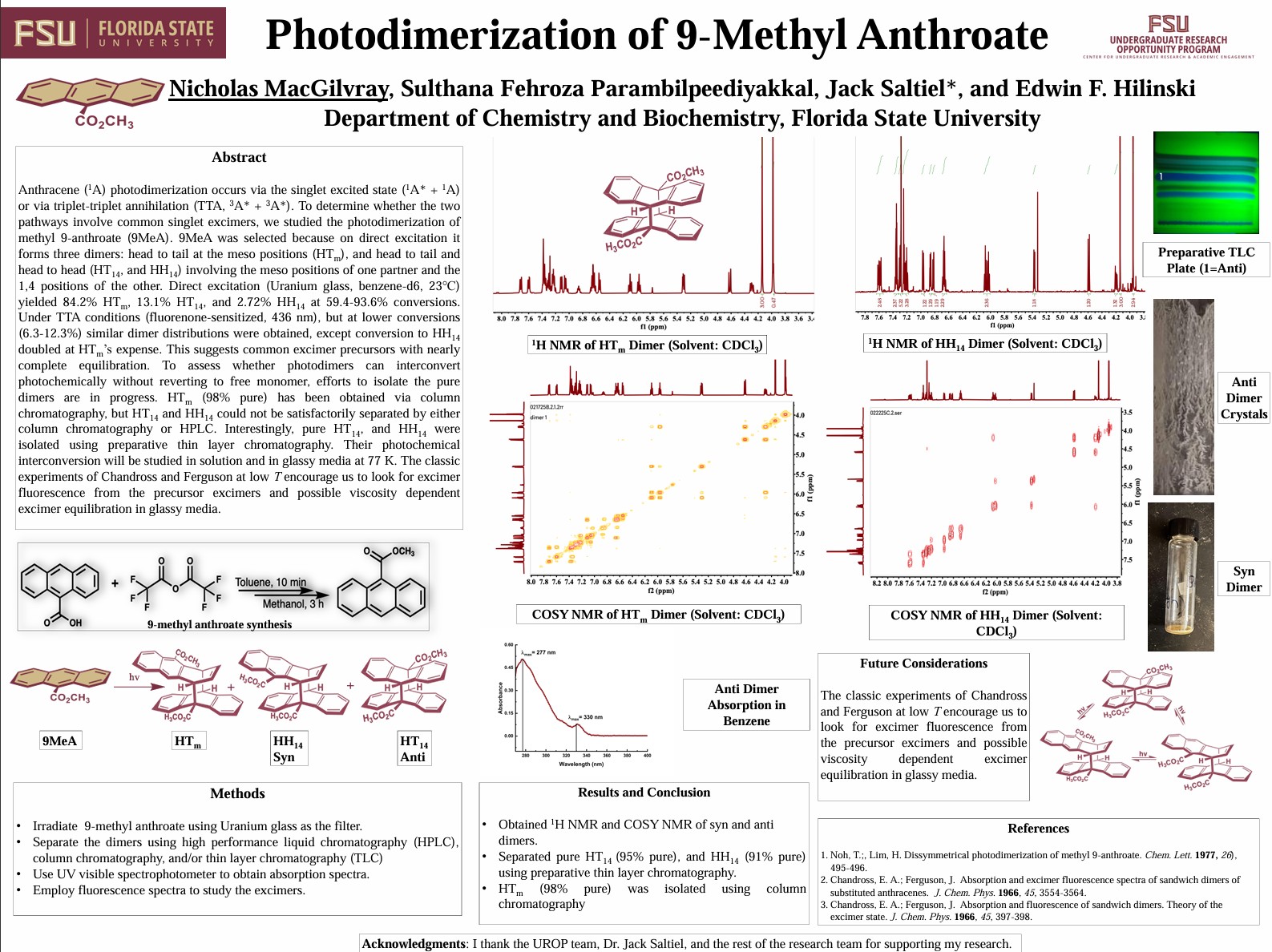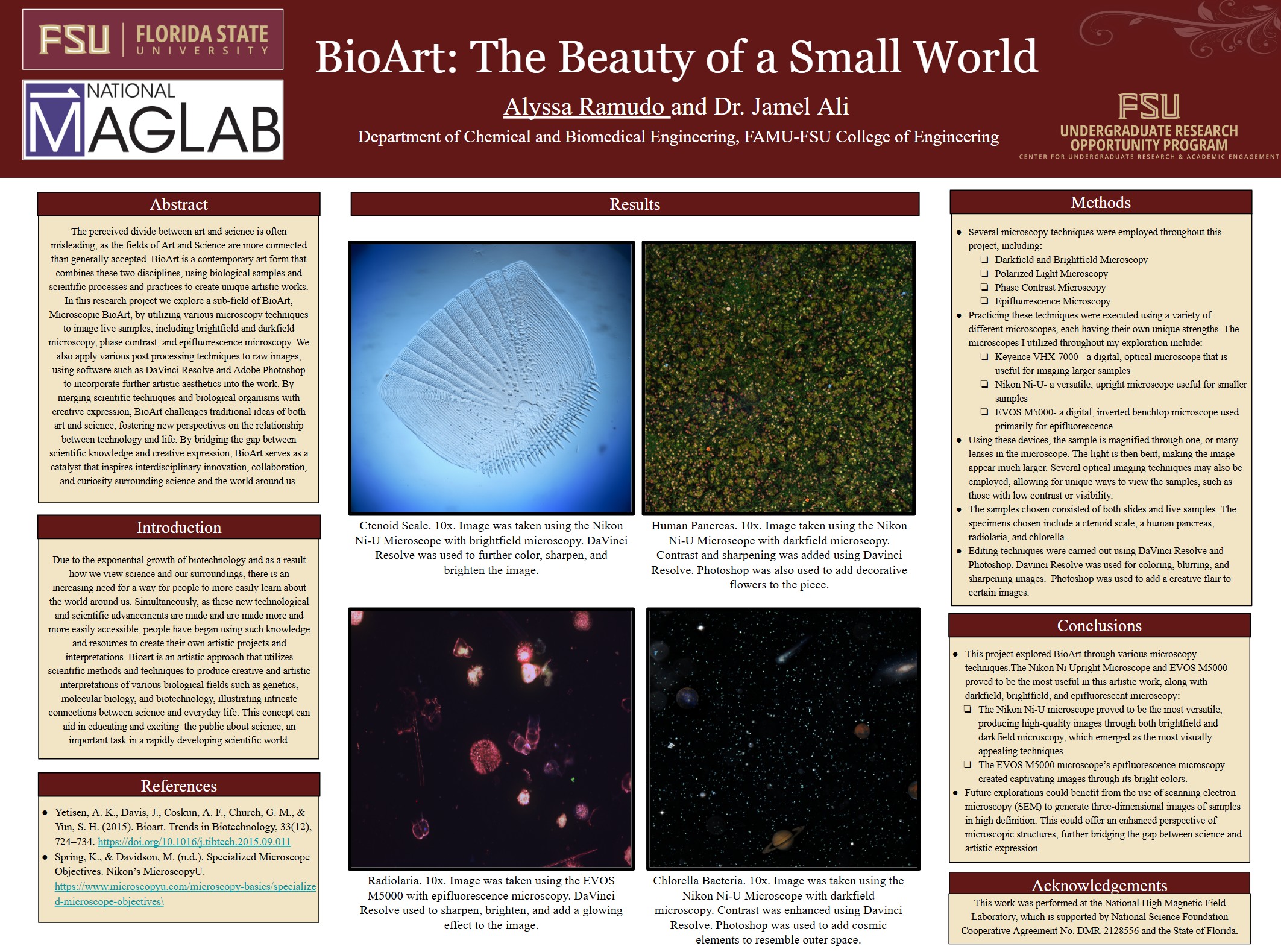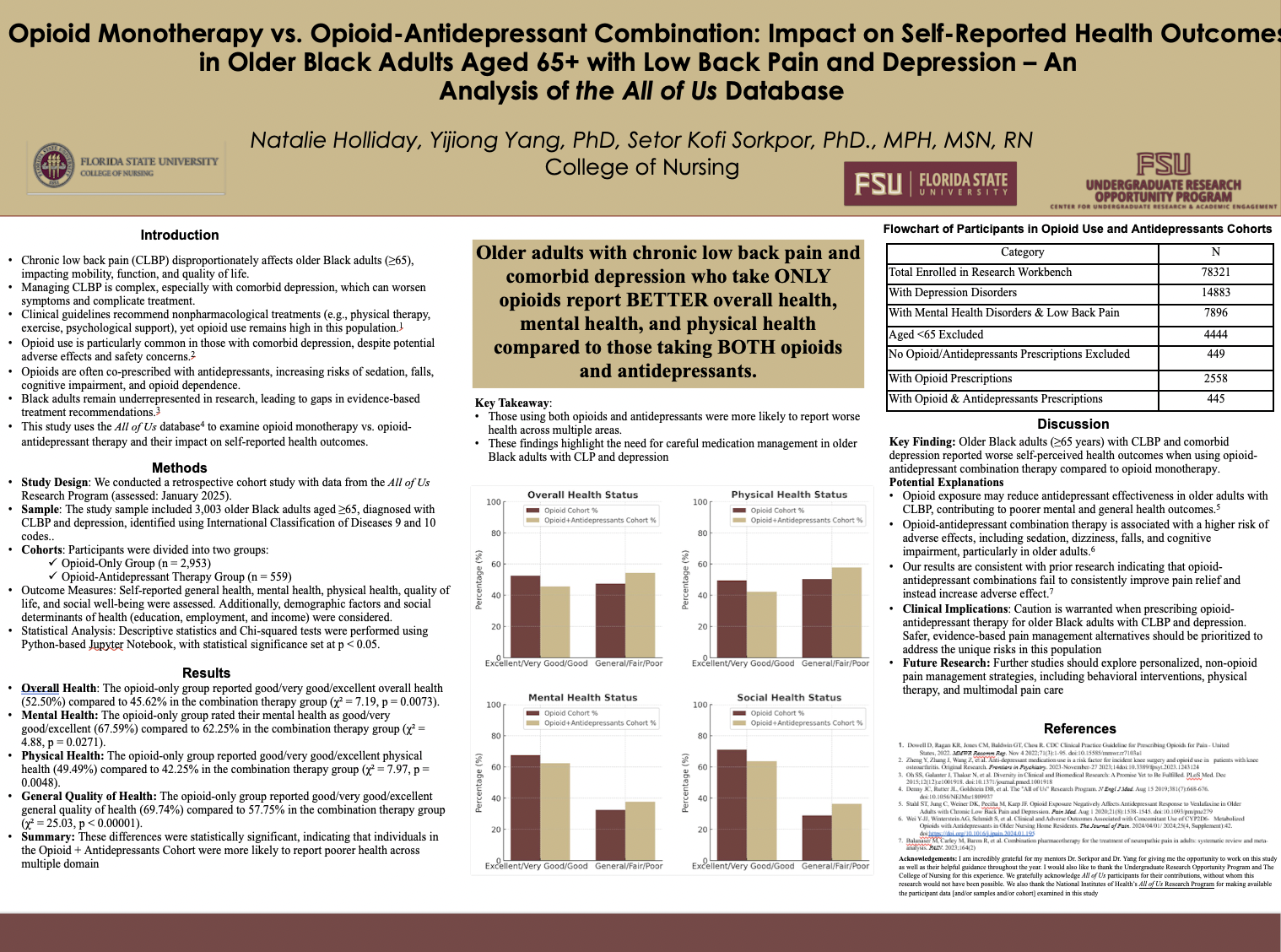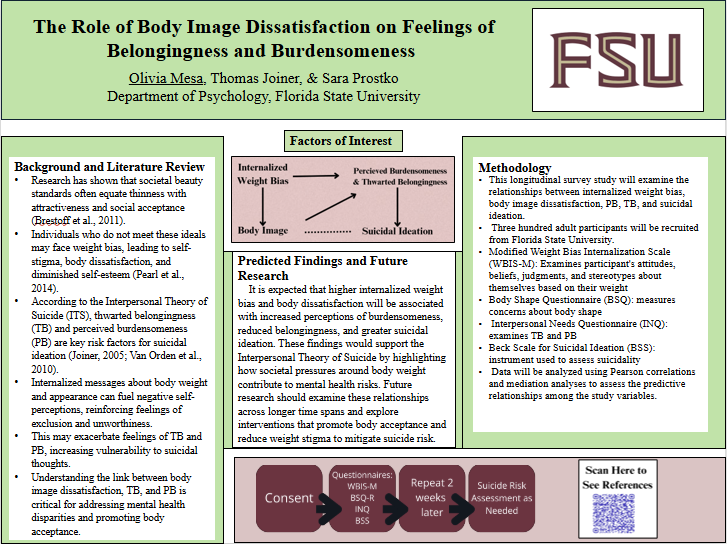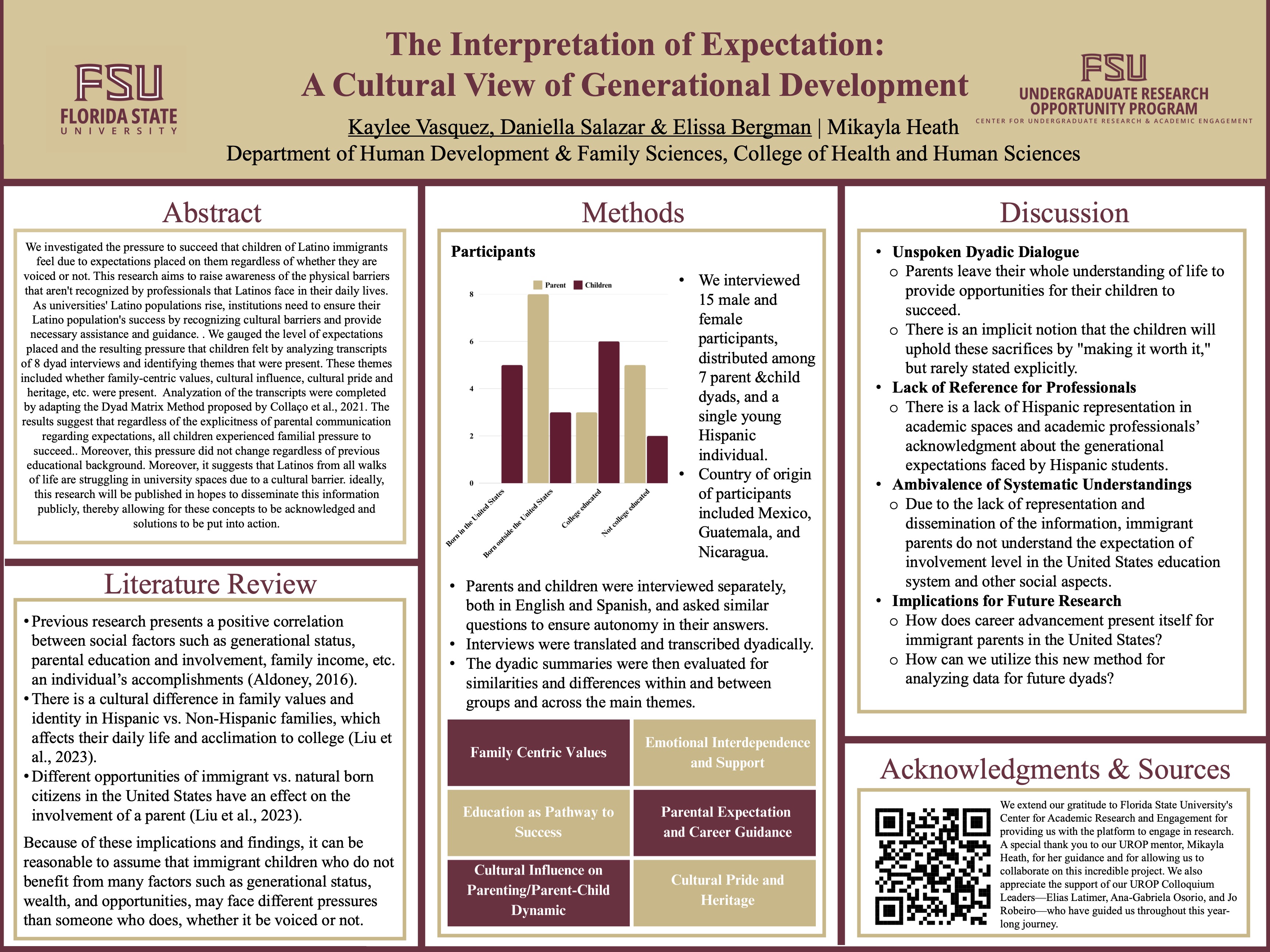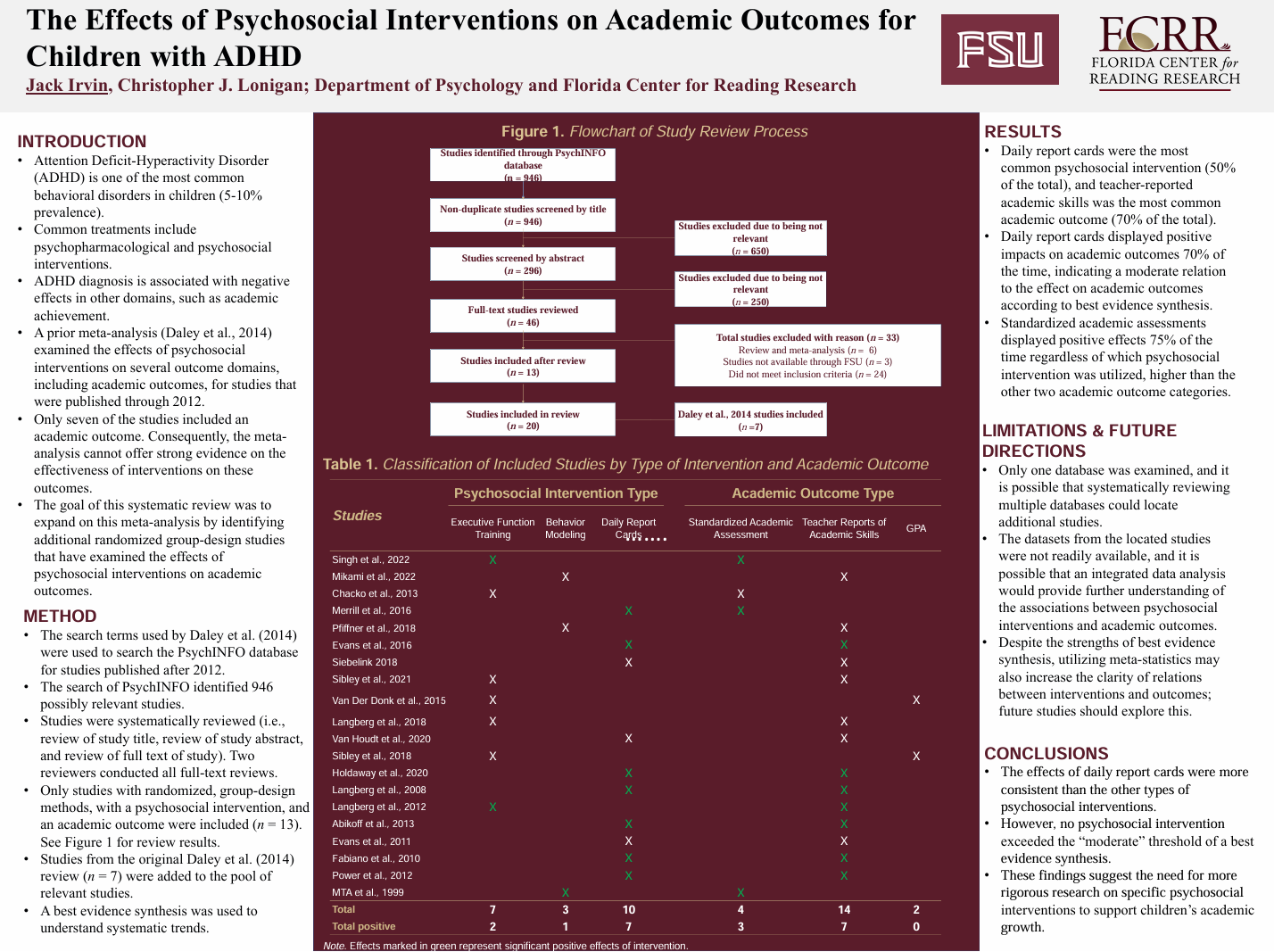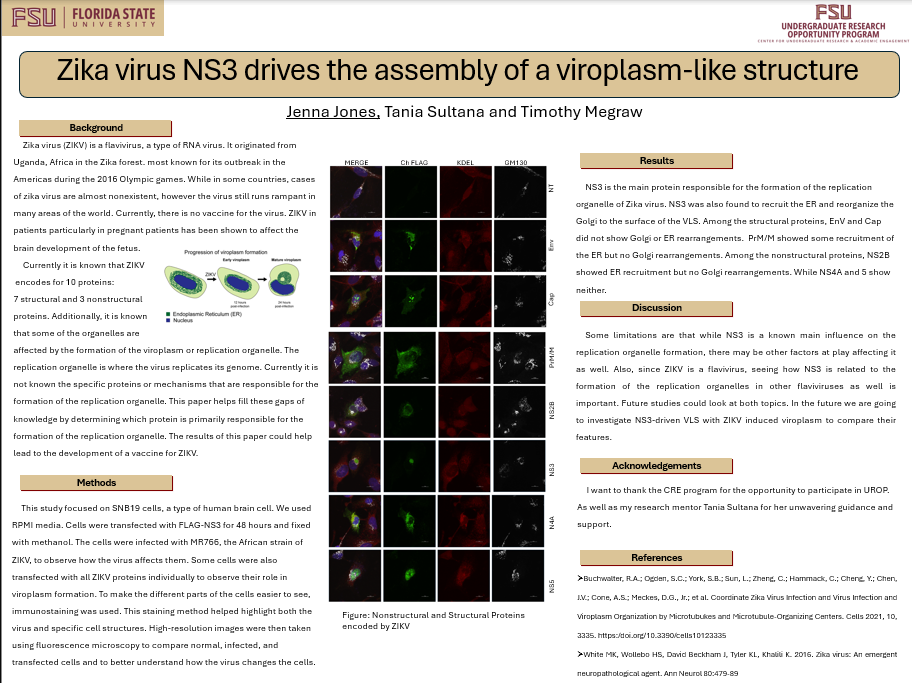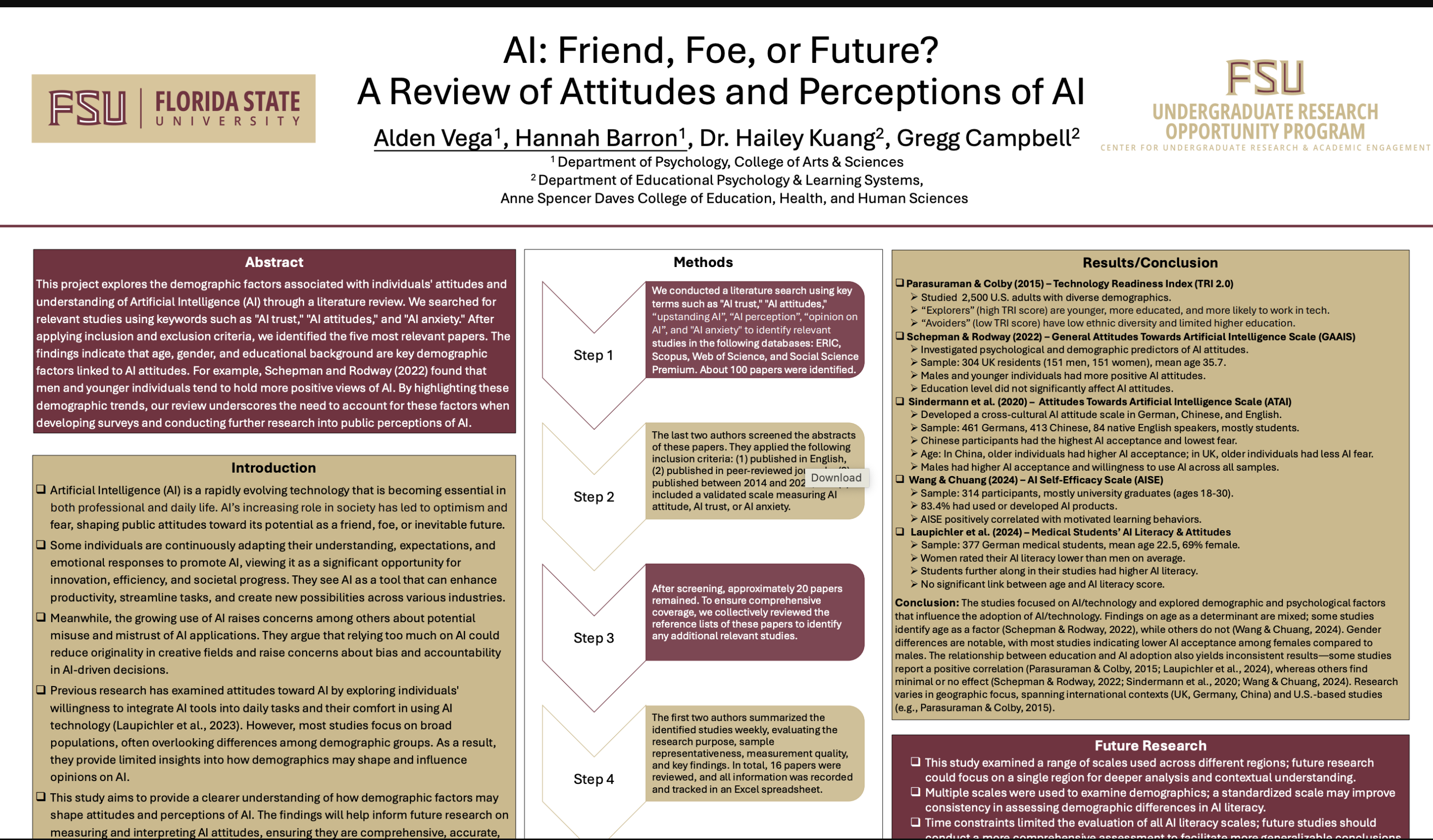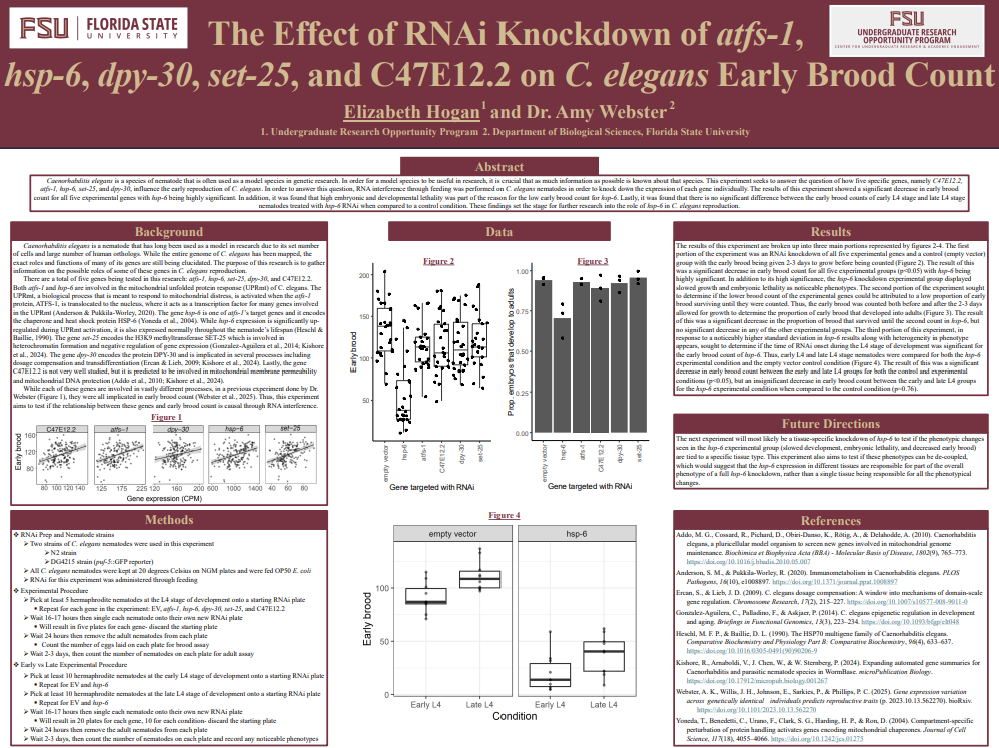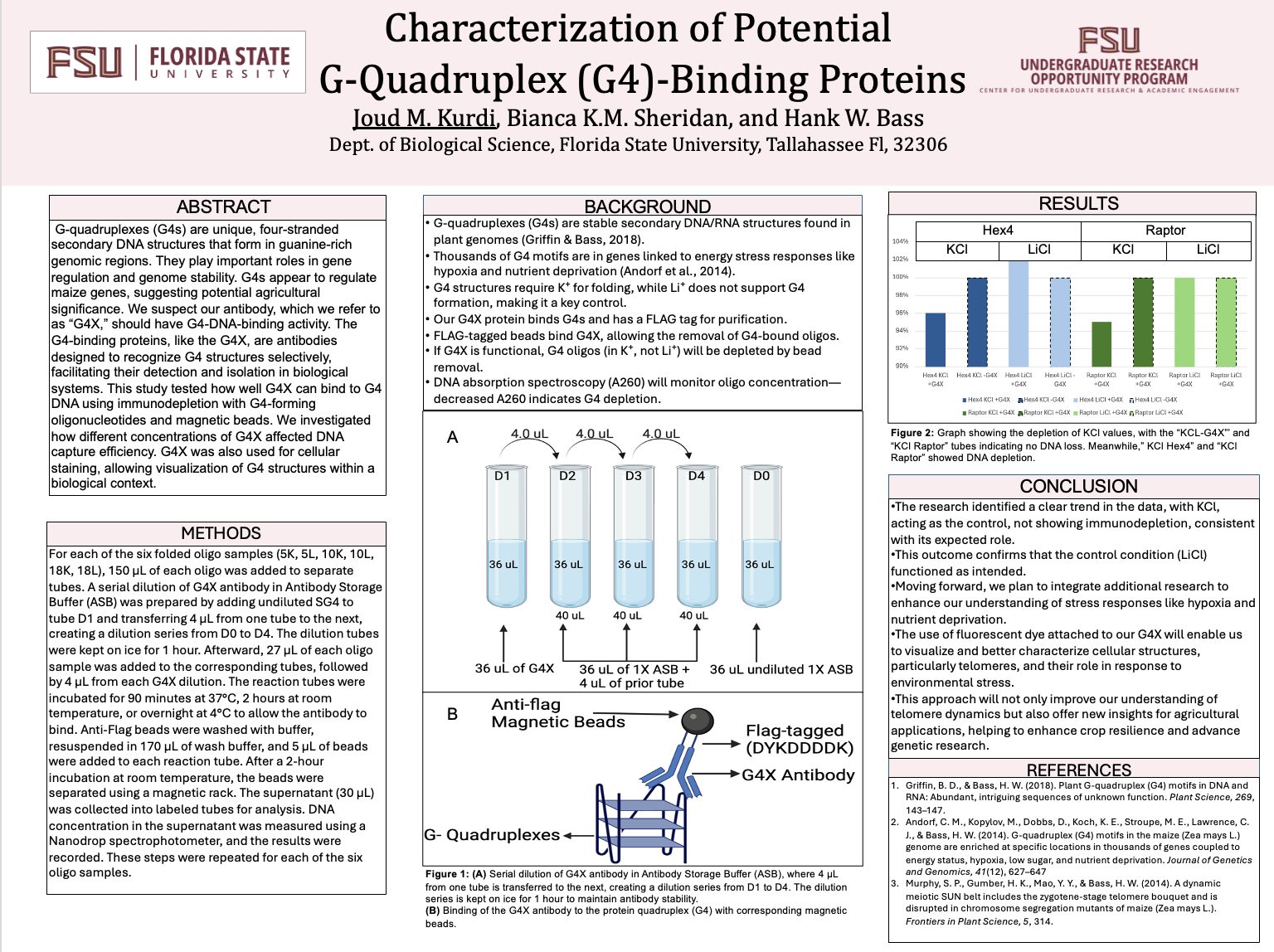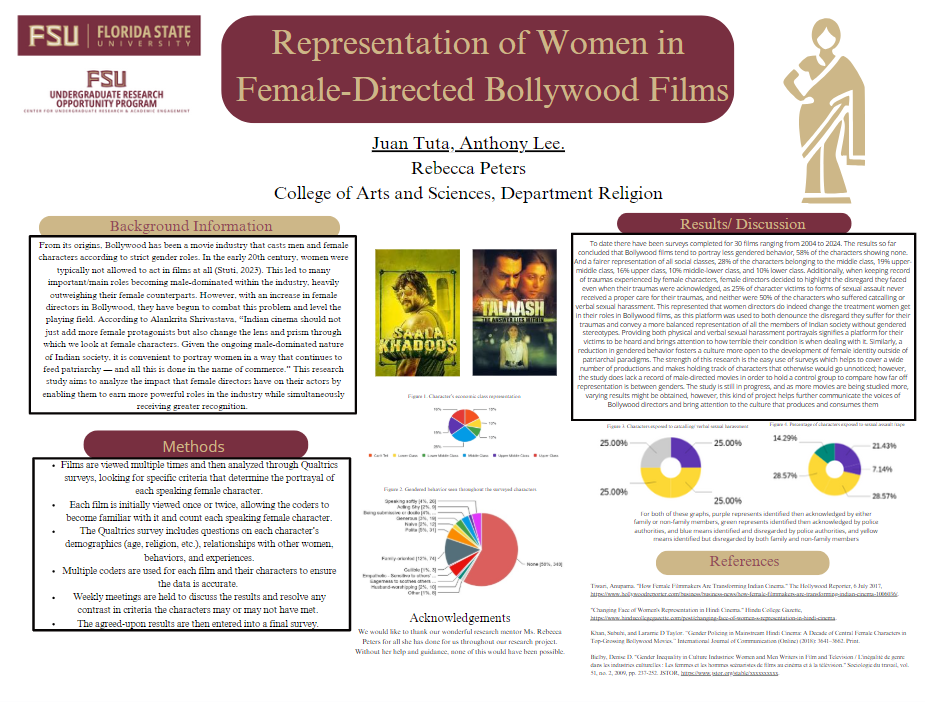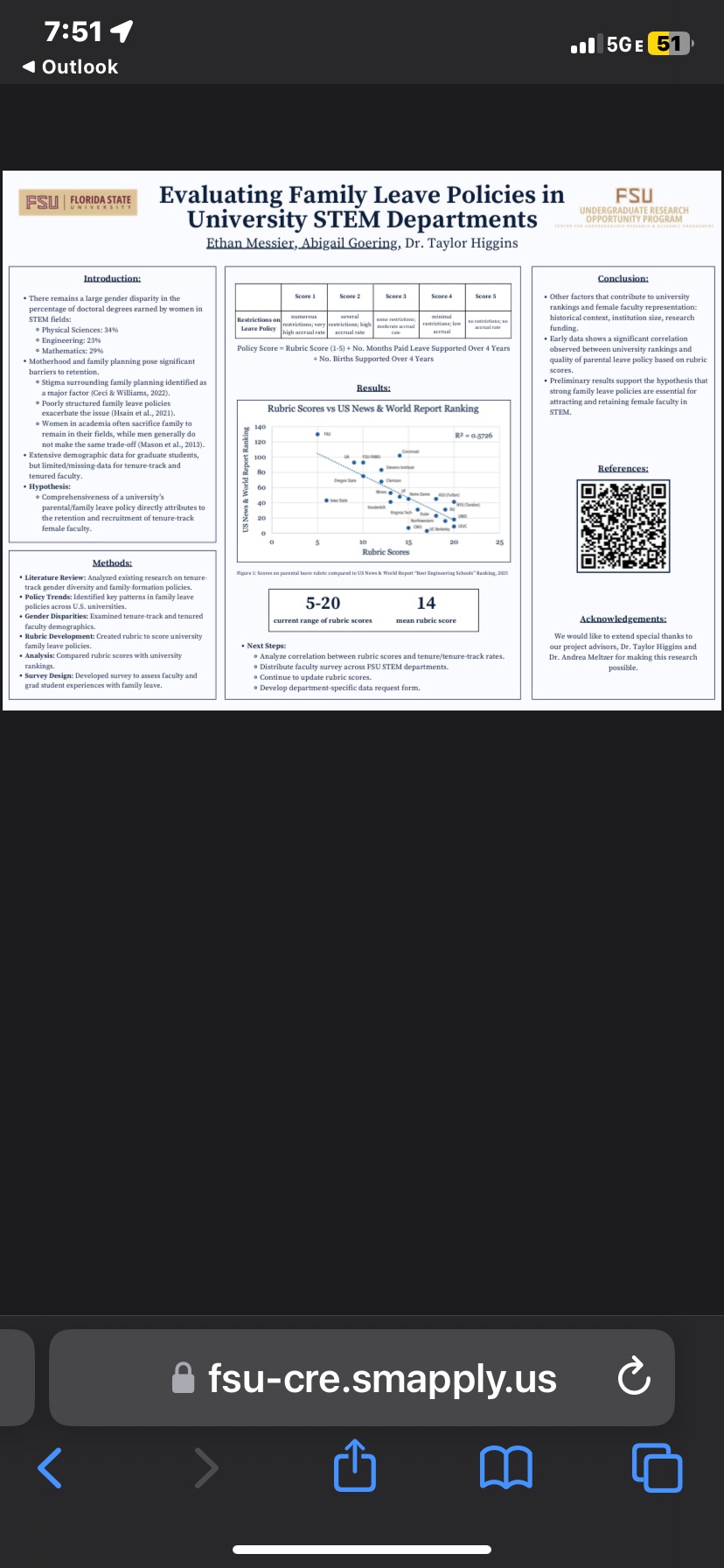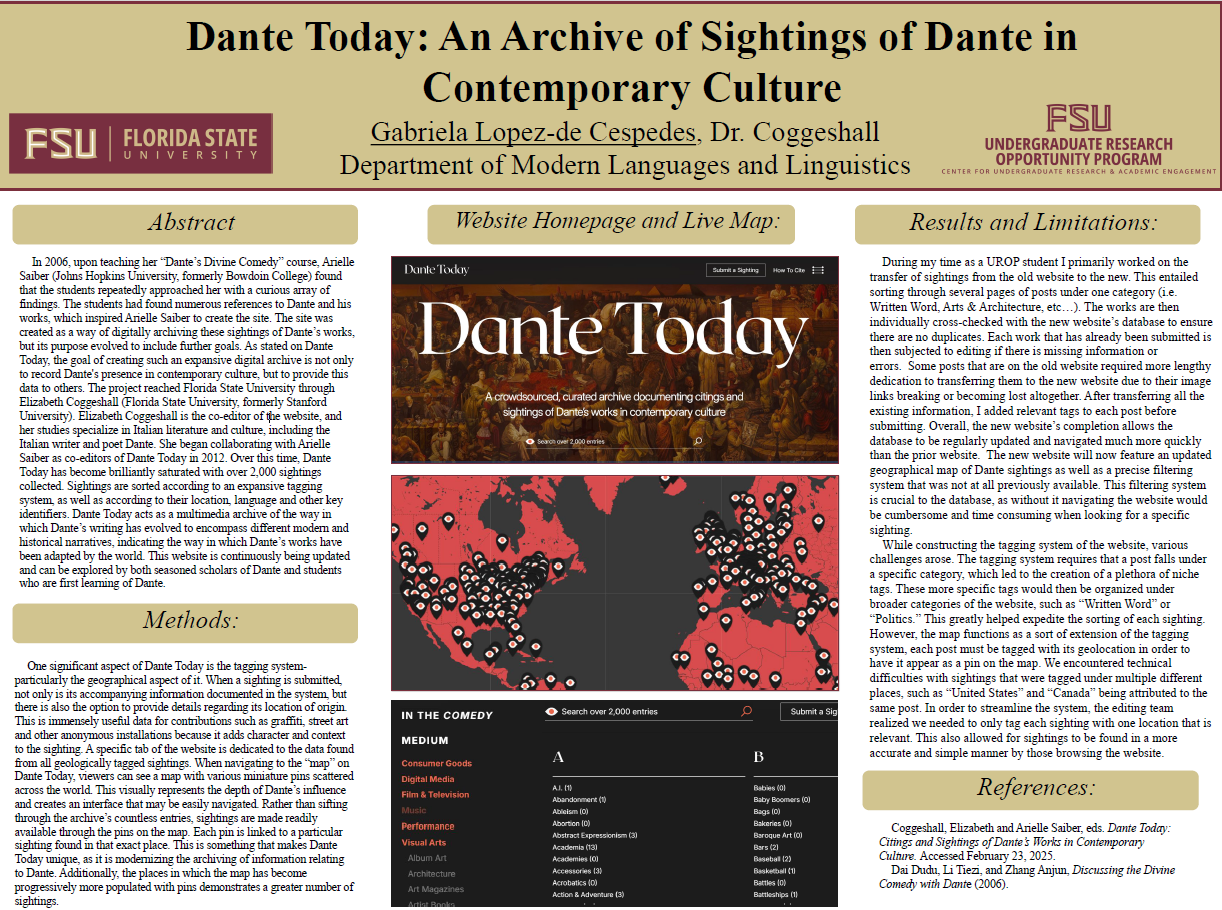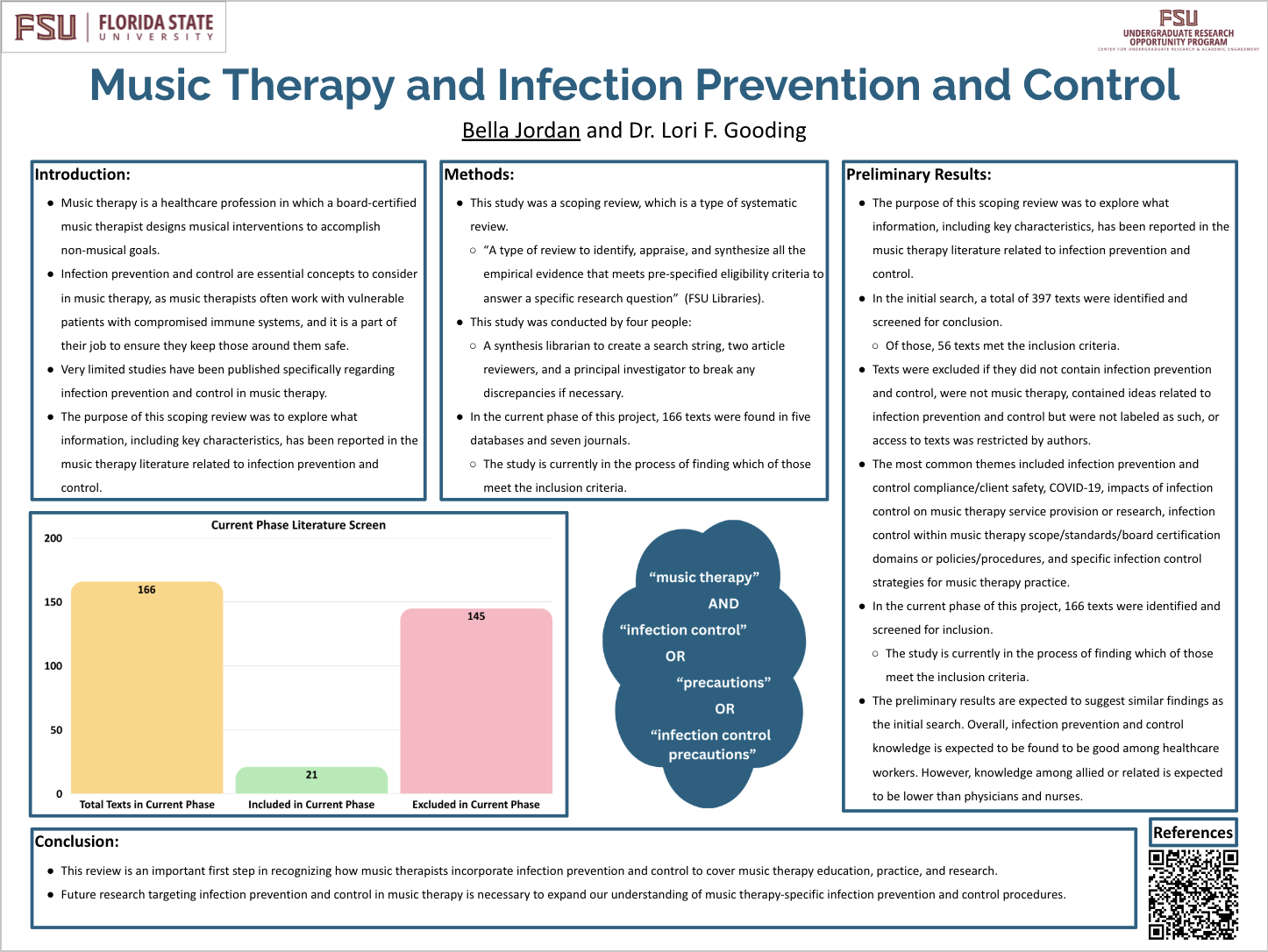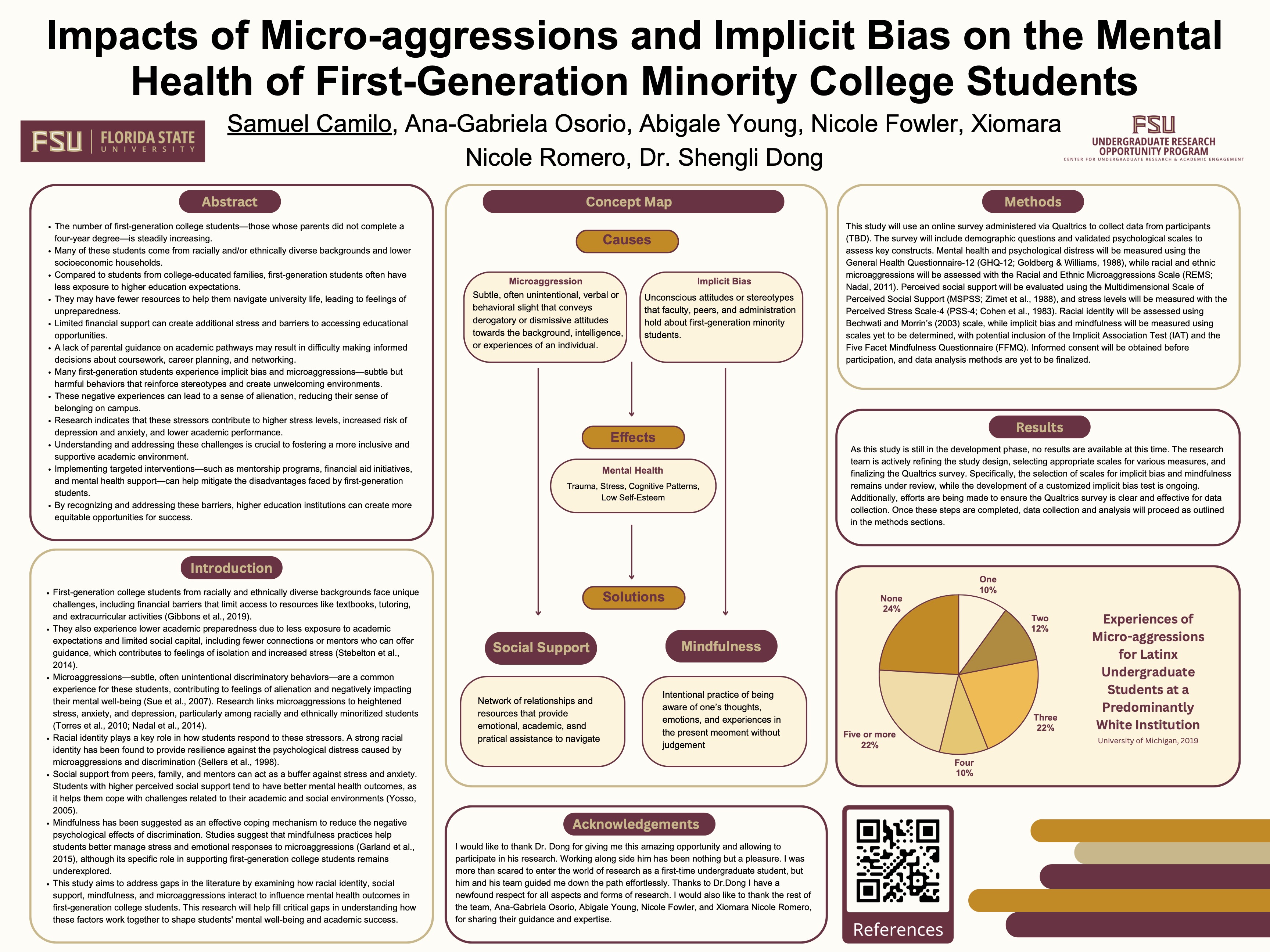Research Symposium
25th annual Undergraduate Research Symposium, April 1, 2025
Luca Rispa Poster Session 1: 9:30 am - 10:30 am/ Poster #157

BIO
Motivated and detail-oriented researcher with an interest in interdisciplinary work at the intersection of psychology and neuroscience. Seeking opportunities to contribute to research in cognitive science, mental health, or neurobiology.
Relationship Between Depth of Religious Belief and Suicide Acceptability
Authors: Luca Rispa, Dr. Sean DoughertyStudent Major: Behavioral Neuroscience
Mentor: Dr. Sean Dougherty
Mentor's Department: Psychology Mentor's College: Arts and Sciences Co-Presenters:
Abstract
Research on suicide acceptability and various factors has shown mixed evidence, especially regarding various demographic variables. This study examined the relationship between depth of religious belief (DRB) and suicide acceptability (SA) to determine the strength and direction of their association. The magnitude of the association between depth of religious belief and suicide acceptability was examined. Data was collected from FSU students and analyzed with R and RStudio. Outliers were removed and data was analyzed using simple linear regression and Pearson's correlation. Depth of religious belief and suicide acceptability were weakly, negatively correlated, r = -0.19. Depth of religious belief explained a non-significant proportion of variance. We fail to reject the null hypothesis. Future research could continue to explore the relationships between DRB and SA and investigate different populations to determine whether cultural or psychological factors influence this relationship.
Keywords: Suicide, Religion, Religious Belief, Suicide Acceptability
25th annual Undergraduate Research Symposium, April 1, 2025
Lucia Spanjol Poster Session 4: 3:00 pm - 4:00 pm/ Poster #128
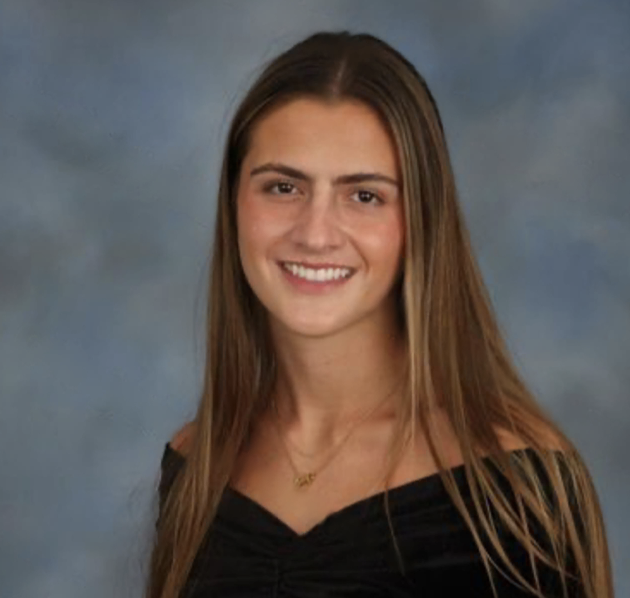
BIO
My name is Lucia Spanjol, and I am a sophomore from Greenwich, Connecticut. I play for the FSU Beach Volleyball Club, and I have been playing volleyball since middle school. I hope to continue my education and become an optometrist.
People Love Statistics. But Do They Understand Them?
Authors: Lucia Spanjol, Patrick MerleStudent Major: Biological Sciences
Mentor: Patrick Merle
Mentor's Department: Communications Mentor's College: College of Business Co-Presenters:
Abstract
We are testing to see how the use of scientific jargon in advertising affects consumer intentions.
People are affected by the exploitation of jargon daily through product advertising and misinterpretation of research. To test these relationships, we plan to conduct a 2 (presence or absence of scientific jargon) by 2 (presence or absence of percentages) between-subjects experiment through mock social media advertisements created on the popular social media platform TikTok. We expect that there would be more consumer interaction with a TikTok video that includes scientific language than one that does not, as well as more interaction on a TikTok video, including the use of percentages versus without. Our predictions imply that scientific jargon affects consumers positively, as shown by the positive correlation between scientific jargon and video interaction.
Keywords: Scienceploitation, Communications, Jargon
25th annual Undergraduate Research Symposium, April 1, 2025
Alexander Richardson Poster Session 3: 1:45 pm - 2:45 pm/ Poster #16

BIO
My name is Alexander Richardson, and I am a second-year student at FSU in the nursing major. I am also a first-generation student in the QUEST Scholars program. Once I graduate, I would like to become a nurse anesthetist and hopefully own a business/practice one day.
Protecting Privacy and Advancing Understanding: Deidentifying Data on Barriers and Facilitators in School Systems
Authors: Alexander Richardson, Denisha CampbellStudent Major: NFA-Nursing
Mentor: Denisha Campbell
Mentor's Department: Communication Science and Disorders Mentor's College: Communication and Information Co-Presenters:
Abstract
The purpose of this research is to explore a cutting-edge process called implementation science to examine how a team conducts evidence-based research, improving the ways it is implemented in real world scenarios. Implementation science is a process that allows research and its results to be incorporated in real life. In this project, we are gathering data regarding the ability of some school systems to provide resources that aid in helping educators and administrators work with students with dyslexia and other developmental learning disabilities. The team works on deidentifying focus group discussions, which will later be coded into a qualitative data analysis software called NVIVO, where the results will be stored and accessed. The team meets often to discuss tasks for each week, highlighting important documents, and identifying necessary protocols to keep the project organized and on track, allowing coding and data analysis to be done efficiently and effectively. The results of this project will compile qualitative feedback from focus groups consisting of people with different experiences and will give us an idea of how implementation science can improve resources in schools for students with dyslexia or other DLDs. The research done here will also serve as groundwork for later studies who may be interested in using these same methods and add to the growing use of implementation science in countless different settings.
Keywords: Communication, Dyslexia, Implementation
25th annual Undergraduate Research Symposium, April 1, 2025
Flora Voit Poster Session 1: 9:30 am - 10:30 am / Poster #182
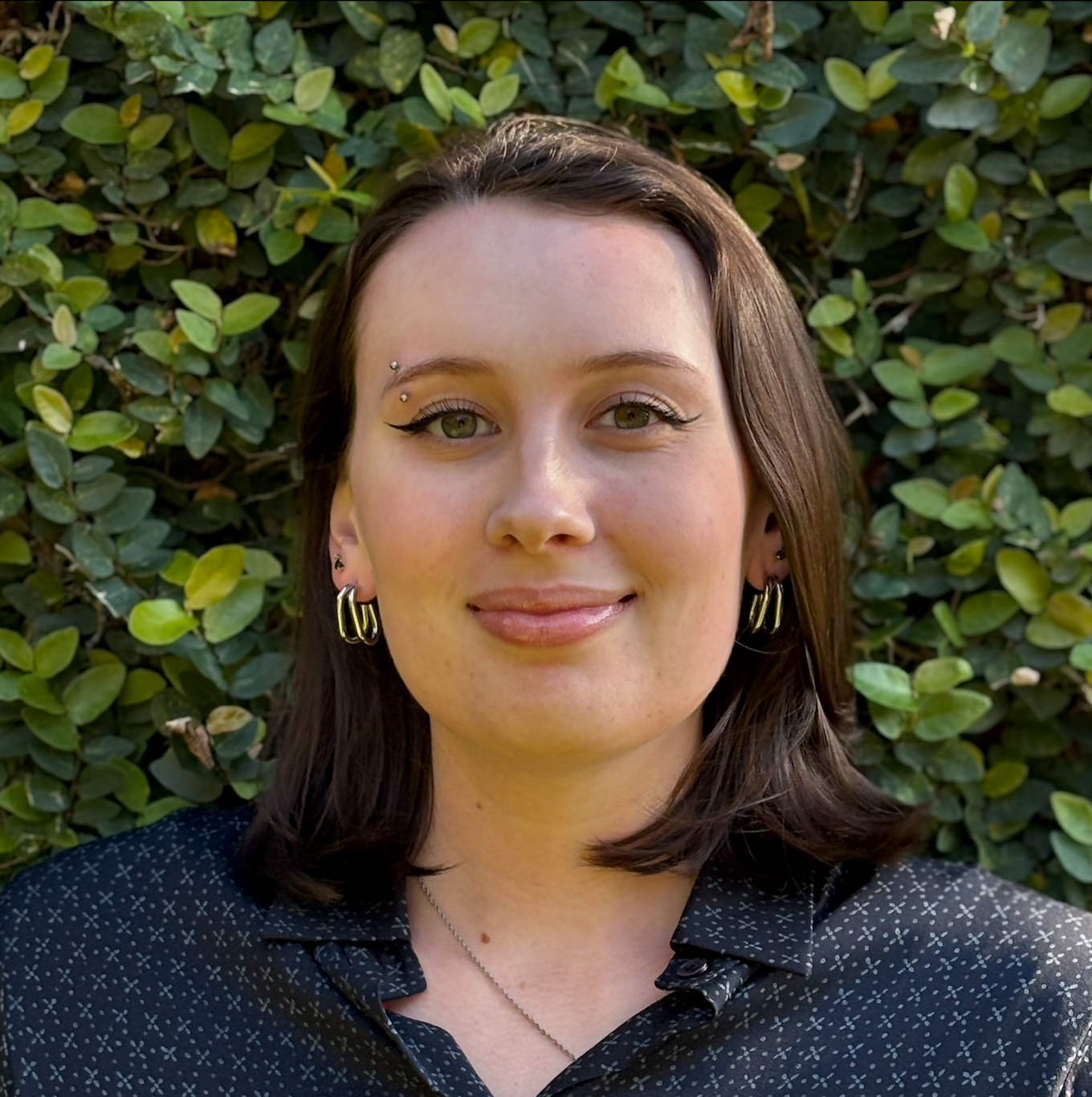
BIO
Hi, I'm Flora, a first-year Honors student majoring in Applied Mathematics and Finance. This year, I conducted research through the UROP program, exploring lying behavior in an experimental economic setting. I'm originally from Tampa, Florida, and in my free time, I enjoy reading, knitting, solving jigsaw puzzles, and playing the piano.
Honesty and Observability
Authors: Flora Voit, Jose LopezStudent Major: Applied Mathematics, Finance
Mentor: Jose Lopez
Mentor's Department: Economics Mentor's College: College of Social Sciences and Public Policy Co-Presenters: Mark Butler
Abstract
In this project, we use an experiment centered on the likelihood of lies when the probability of detection changes. The experiment consists of a game where subjects receive a private message and are then given the opportunity to dishonestly report that message. Higher reports equal higher pay, so lying is incentivized. Previous experiments have focused on two settings: 1. The experimenter can verify the private message of every subject in the experiment such that he knows whether each individual subject is truthfully reporting, and 2. The experimenter cannot verify the private message of any of the subjects in the experiment such that it is impossible for him to know whether any individual subject is truthfully reporting. We expand on these settings of 100% and 0% observability by conducting trials at 20% and 50% observability, in which a proportion of decisions are observed but the remainder are not. We then analyzed and tested models related to the utility a subject receives from reporting different messages. Through this, we gain insight into the tension between personal gains and the desire to be (or appear to be) honest.
Keywords: Economics, Experimental Economics, Behavioral Economics, Honesty, Psychology
25th annual Undergraduate Research Symposium, April 1, 2025
Nicholas MacGilvray Poster Session 2: 10:45 am - 11:45 am/ Poster #216
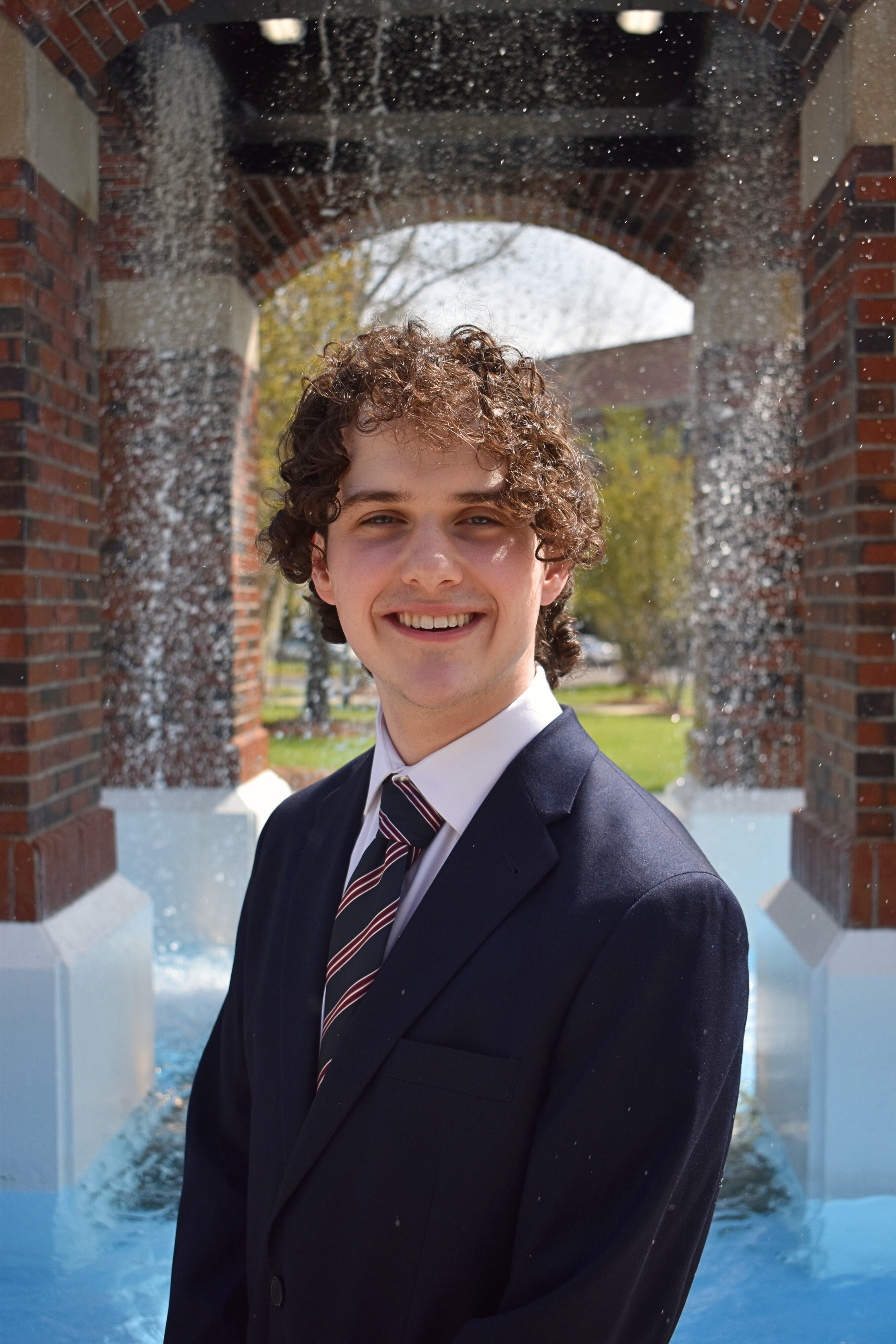
BIO
My name is Nicholas MacGilvray, and I am an undergraduate student at Florida State University majoring in Biochemistry and on the pre-med track. I plan on earning my M.D. and becoming a physician. My academic interests include biochemical pharmacology, cell biology, and photochemical reactions.
Photodimerization of 9-Methyl Anthroate
Authors: Nicholas MacGilvray, Jack SaltielStudent Major: Biochemistry
Mentor: Jack Saltiel
Mentor's Department: Chemistry and Biochemistry Mentor's College: College of Arts and Sciences Co-Presenters:
Abstract
Anthracene (1A) photodimerization occurs via the singlet excited state (1A* + 1A) or via triplet-triplet annihilation (TTA, 3A* + 3A*). To determine whether the two pathways involve common singlet excimers, we studied the photodimerization of methyl 9-anthroate (9MeA). 9MeA was selected because on direct excitation it forms three dimers: head to tail at the meso positions (HTm), and head to tail and head to head (HT14, and HH14) involving the meso positions of one partner and the 1,4 positions of the other. Direct excitation (Uranium glass, benzene-d6, 23℃) yielded 84.2% HTm, 13.1% HT14, and 2.72% HH14 at 59.4-93.6% conversions. Under TTA conditions (fluorenone-sensitized, 436 nm), but at lower conversions (6.3-12.3%) similar dimer distributions were obtained, except conversion to HH14 doubled at HTm’s expense. This suggests common excimer precursors with nearly complete equilibration. To assess whether photodimers can interconvert photochemically without reverting to free monomer, efforts to isolate the pure dimers are in progress. HTm (98% pure) has been obtained via column chromatography, but HT14 and HH14 could not be satisfactorily separated by either column chromatography or HPLC. Interestingly, pure HT14, and HH14 were isolated using preparative thin layer chromatography. Their photochemical interconversion will be studied in solution and in glassy media at 77 K. The classic experiments of Chandross and Ferguson at low T encourage us to look for excimer fluorescence from the precursor excimers and possible viscosity dependent excimer equilibration in glassy media.
Keywords: photochemistry, photodimerization, anthracene
25th annual Undergraduate Research Symposium, April 1, 2025
Alyssa Ramudo Poster Session 2: 10:45 am - 11:45 am/ Poster #39
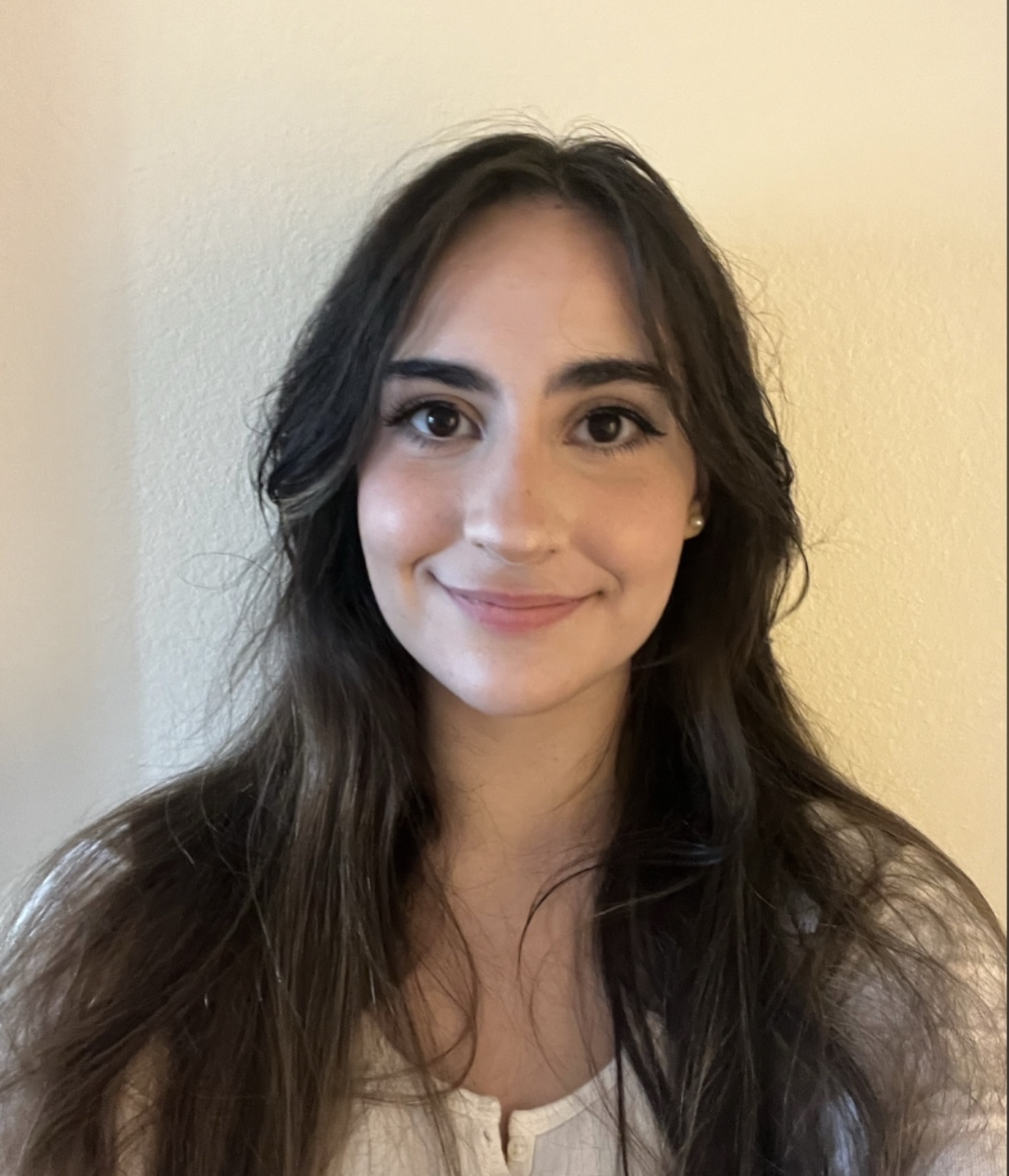
BIO
My name is Alyssa Ramudo, and I’m a second-year Biology student at FSU from Michigan. I’m passionate about biomedical sciences and healthcare, with an interest in possibly becoming a Physician Assistant (PA). I want to use what I learn to help others and make a difference in science. I’ve always loved nature and animals, which sparked my curiosity about how living things work. I also enjoy doing lab research and exploring new scientific ideas. In the future, I hope to combine my interest in healthcare and research to improve lives and contribute to science.
BioArt: The Beauty of a Small World
Authors: Alyssa Ramudo, Dr. Jamel AliStudent Major: Biology
Mentor: Dr. Jamel Ali
Mentor's Department: Department of Chemical and Biomedical Engineering, Mentor's College: FAMU-FSU College of Engineering Co-Presenters:
Abstract
The perceived divide between art and science is often misleading, as the fields of Art and Science are more connected than generally accepted. BioArt is a contemporary art form that combines these two disciplines, using biological samples and scientific processes and practices to create unique artistic works. In this research project we explore a sub-field of BioArt, Microscopic BioArt, by utilizing various microscopy techniques to image live samples, including brightfield and darkfield microscopy, phase contrast, and epifluorescence microscopy. We also apply various post processing techniques to raw images, using software such as DaVinci Resolve and Adobe Photoshop to incorporate further artistic aesthetics into the work. By merging scientific techniques and biological organisms with creative expression, BioArt challenges traditional ideas of both art and science, fostering new perspectives on the relationship between technology and life. By bridging the gap between scientific knowledge and creative expression, BioArt serves as a catalyst that inspires interdisciplinary innovation, collaboration, and curiosity surrounding science and the world around us.
Keywords: Biology, Art, Microscopy,
25th annual Undergraduate Research Symposium, April 1, 2025
Natalie Holliday Poster Session 4: 3:00 pm - 4:00 pm/ Poster #164
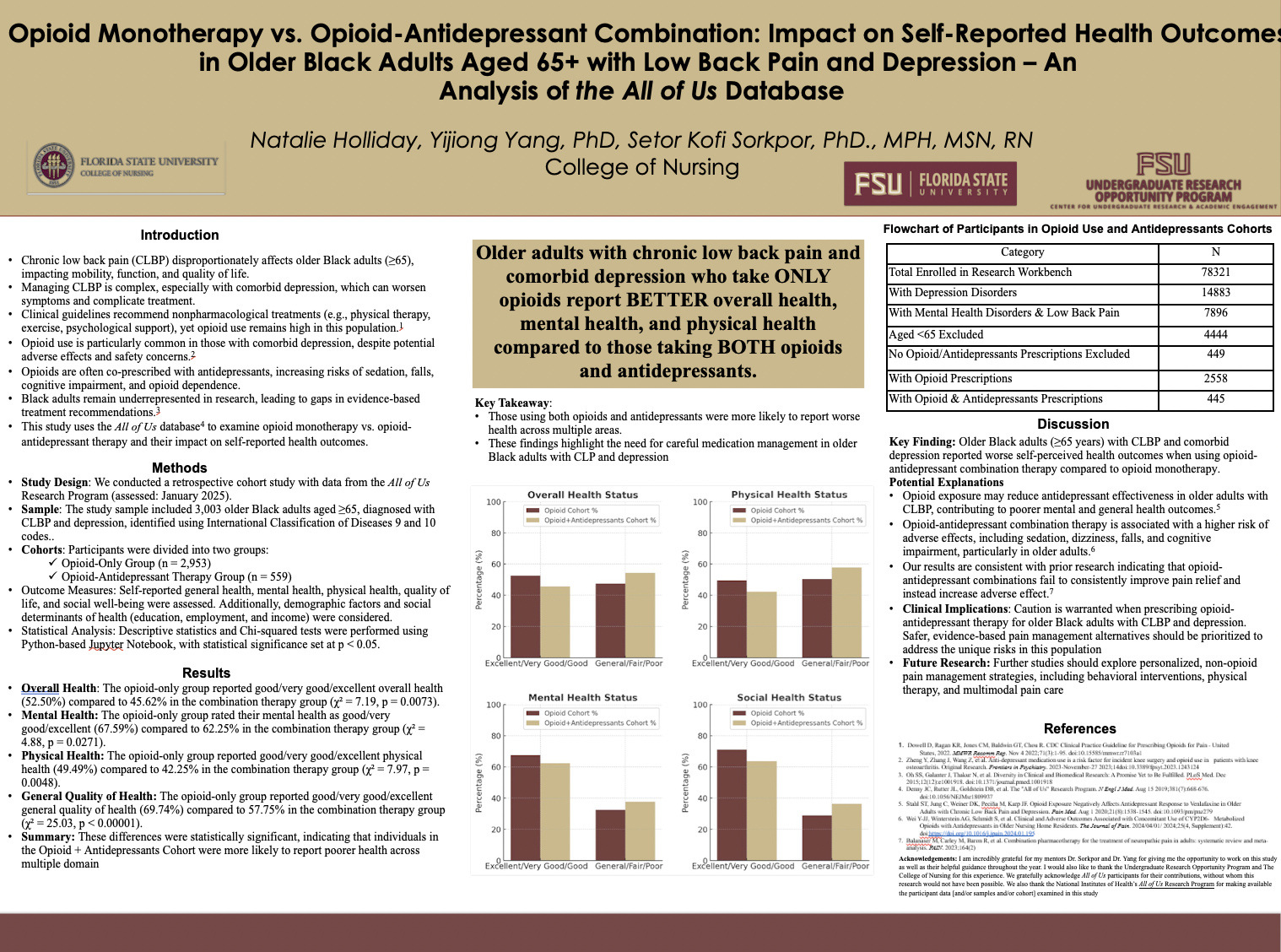
BIO
My name is Natalie Holliday and I am from Nashville, Tennessee. I am a freshman majoring in Psychology and I have loved my experience participating in the Undergraduate Research Opportunity Program this year. During my time in UROP this year I have worked with Dr. Sorkpor and Dr. Yang in the College of Nursing investigating treatments for Chronic lower back pain. I have learned many valuable skills and gained useful skills during my time working on this research.
pioid Monotherapy vs. Opioid-Antidepressant Combination: Impact on Self-Reported Health Outcomes in Older Black Adults Aged 65+ with Low Back Pain and Depression – An Analysis of the All of Us Database
Authors: Natalie Holliday, Dr. Setor Kofi SorkporStudent Major: Psychology
Mentor: Dr. Setor Kofi Sorkpor
Mentor's Department: College of nursing Mentor's College: Florida State University Co-Presenters:
Abstract
Introduction: Chronic low back pain (CLBP) disproportionately affects older Black adults (≥65), yet they encounter significant barriers to diagnosis and treatment. Although guidelines recommend nonpharmacological interventions as first-line treatment, opioid use remains common, particularly among those with comorbid depression, where it is sometimes combined with antidepressants despite potential risks. This study examines the impact of opioid use alone versus opioid-antidepressant combination therapy on self-reported health outcomes in this population.
Methods: We conducted a secondary analysis using data from the All of Us Research Program (January 2025). The sample included 3,003 older Black adults (≥65) diagnosed with CLBP and depression. Participants were categorized into two cohorts: (1) opioid-only users (n=2,558) and (2) opioid plus antidepressant users (n=445). Descriptive and statistical analyses were conducted using Python on the All of Us Data Workbench.
Results: Preliminary results suggest that opioid-only cohort reported more favorable outcomes than the combination therapy group. A higher percentage of opioid-only users rated their overall (52.50% vs. 45.62%), mental (67.59% vs. 62.25%), physical (49.49% vs. 42.25%), and general quality of health (69.74% vs. 57.75%) as good or better.
Significance: These findings suggest that combined opioid-antidepressant therapy is associated with poorer self-perceived health outcomes compared to opioid monotherapy. Considering current clinical guidelines that favor nonpharmacological treatments and caution against polypharmacy, this combination intervention is not recommended for Black adults >65 with CLBP and depression. Alternative, evidence-based pain management strategies should be prioritized for this vulnerable population.
Keywords: Opioids, antidepressants, backpain, depression
25th annual Undergraduate Research Symposium, April 1, 2025
Olivia Mesa Poster Session 2: 10:45 am - 11:45 am/ Poster #223
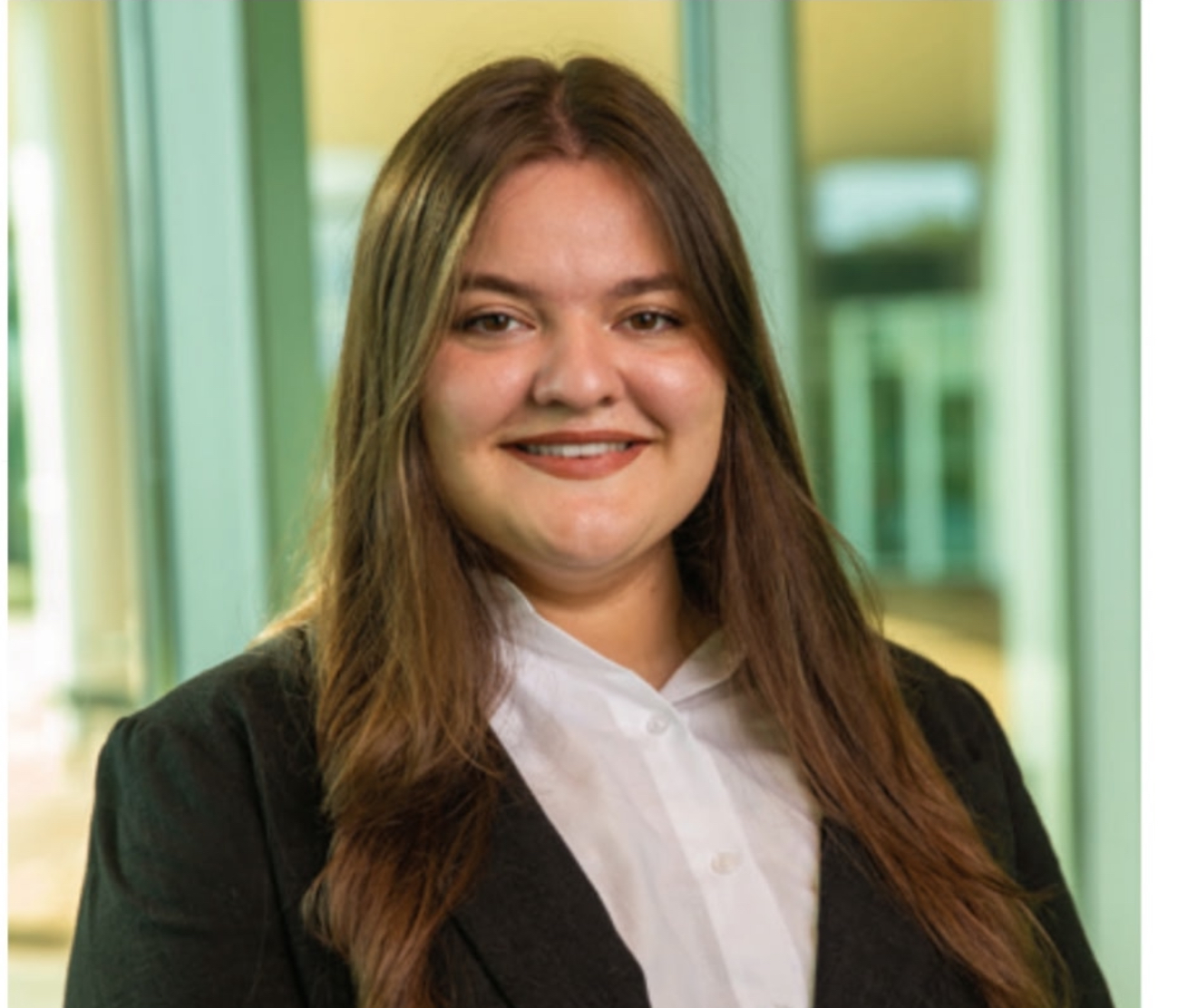
BIO
My name is Olivia Mesa, and I am a junior pursuing a double major in Psychology and Social Work. I have a passion for counseling and clinical research, and I am getting to perform this work with my research assistant position in the Joiner Lab. During my time as a research assistant, I have worked on virtual reality scenarios regarding people's decisions on suicide. In the future, I would like to be involved in crisis work and help those facing
The Role of Body Image Dissatisfaction on Feelings of Belongingness and Burdensomeness
Authors: Olivia Mesa, Sara ProstkoStudent Major: Psychology and Social Work
Mentor: Sara Prostko
Mentor's Department: Psychology Mentor's College: Science Co-Presenters:
Abstract
Body weight has long been central to societal beauty standards, with thinness linked to attractiveness, health, and social desirability; however, those who do not conform may face social exclusion and diminished belonging (Brestoff et all., 2011). Internalized weight bias, characterized by self-directed stigma and body dissatisfaction, significantly affects self-perception and social integration (Pearl et al., 2014). It has been associated with increased perceptions of burdensomeness and reduced belongingness, both key risk factors for suicidal ideation according to the Interpersonal Theory of Suicide (Joiner, 2005; Van Orden et al., 2010). This study will recruit 300 adult participants from Florida State University. Participants will complete the Modified Weight Bias Internalization Scale (WBIS-M), the Interpersonal Needs Questionnaire (INQ), the Revised Suicidal Behaviors Questionnaire (SBQ-R), and the Body Shape Questionnaire (BSQ) to assess a multitude of body image factors and their relationship with feelings of burdensomeness and belongingness. These factors could increase vulnerability to suicidal thoughts, particularly in a society that idealizes thinness. Understanding how weight bias, body image dissatisfaction, and suicidal ideation intersect is essential for addressing mental health disparities. Future research should explore interventions that promote body acceptance and reduce weight stigma to mitigate these psychological risks.
Keywords: Body Image, Suicidal Ideation
25th annual Undergraduate Research Symposium, April 1, 2025
Elissa Bergman Poster Session 1: 9:30 am - 10:30 am / Poster #159
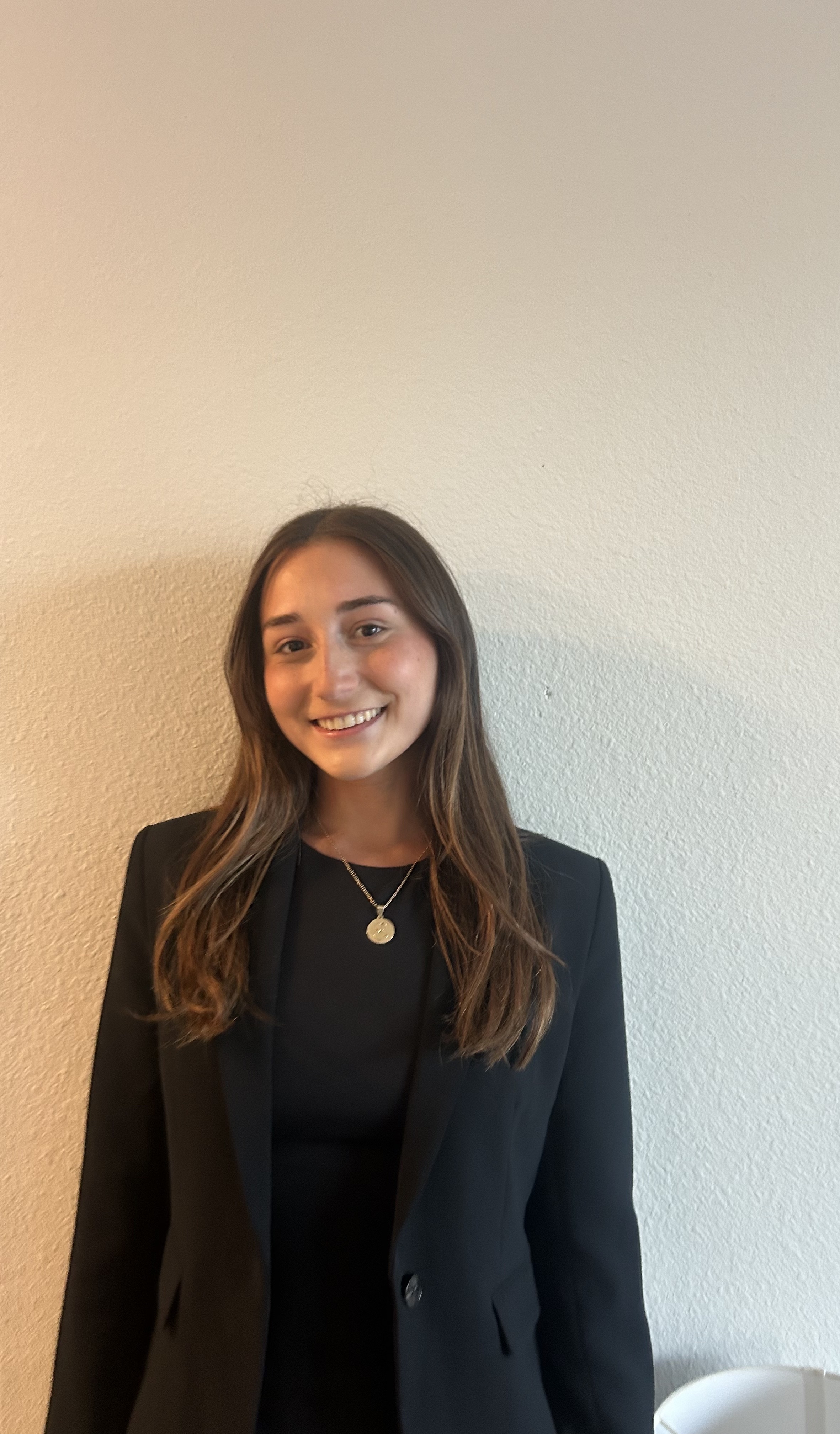
BIO
My name is Elissa Bergman, and I am from Boca Raton, Florida. I am a psychology major and am graduating this spring. I have goals of pursuing a Ph.D. in clinical psychology and eventually working in a private practice setting, conducting research, and working with patients.
The Interpretation of Expectation: A Cultural View of Generational Development
Authors: Elissa Bergman, Mikayla HeathStudent Major: Psychology
Mentor: Mikayla Heath
Mentor's Department: Human Development and Family Sciences Mentor's College: Arts and Sciences Co-Presenters: Kaylee Vasquez, Daniella Salazar
Abstract
We investigated the pressure to succeed that children of Latino immigrants feel due to expectations placed on them regardless of whether they are voiced or not. This research aims to raise awareness of the physical barriers that aren't recognized by professionals that Latinos face in their daily lives. As universities' Latino populations rise, institutions need to ensure their Latino population's success by recognizing cultural barriers and providing necessary assistance and guidance. We gauged the level of expectations placed and the resulting pressure that children felt by analyzing transcripts of 8 dyad interviews and identifying themes that were present. These themes included whether family-centric values, cultural influence, cultural pride and heritage, etc. were present. Analysis of the transcripts was completed by adapting the Dyad Matrix Method proposed by Collaço et al., 2021. The results suggest that regardless of the explicitness of parental communication regarding expectations, all children experienced familial pressure to succeed. Moreover, this pressure did not change regardless of previous educational background. Moreover, it suggests that Latinos from all walks of life are struggling in university spaces due to a cultural barrier. Ideally, this research will be published in hopes of disseminating this information publicly, thereby allowing for these concepts to be acknowledged and solutions to be put into action.
Keywords: Generational Development, Unspoken Dialog, Systematic Understanding, Pressure
25th annual Undergraduate Research Symposium, April 1, 2025
Jack Irvin Poster Session 4: 3:00 pm - 4:00 pm / Poster #244
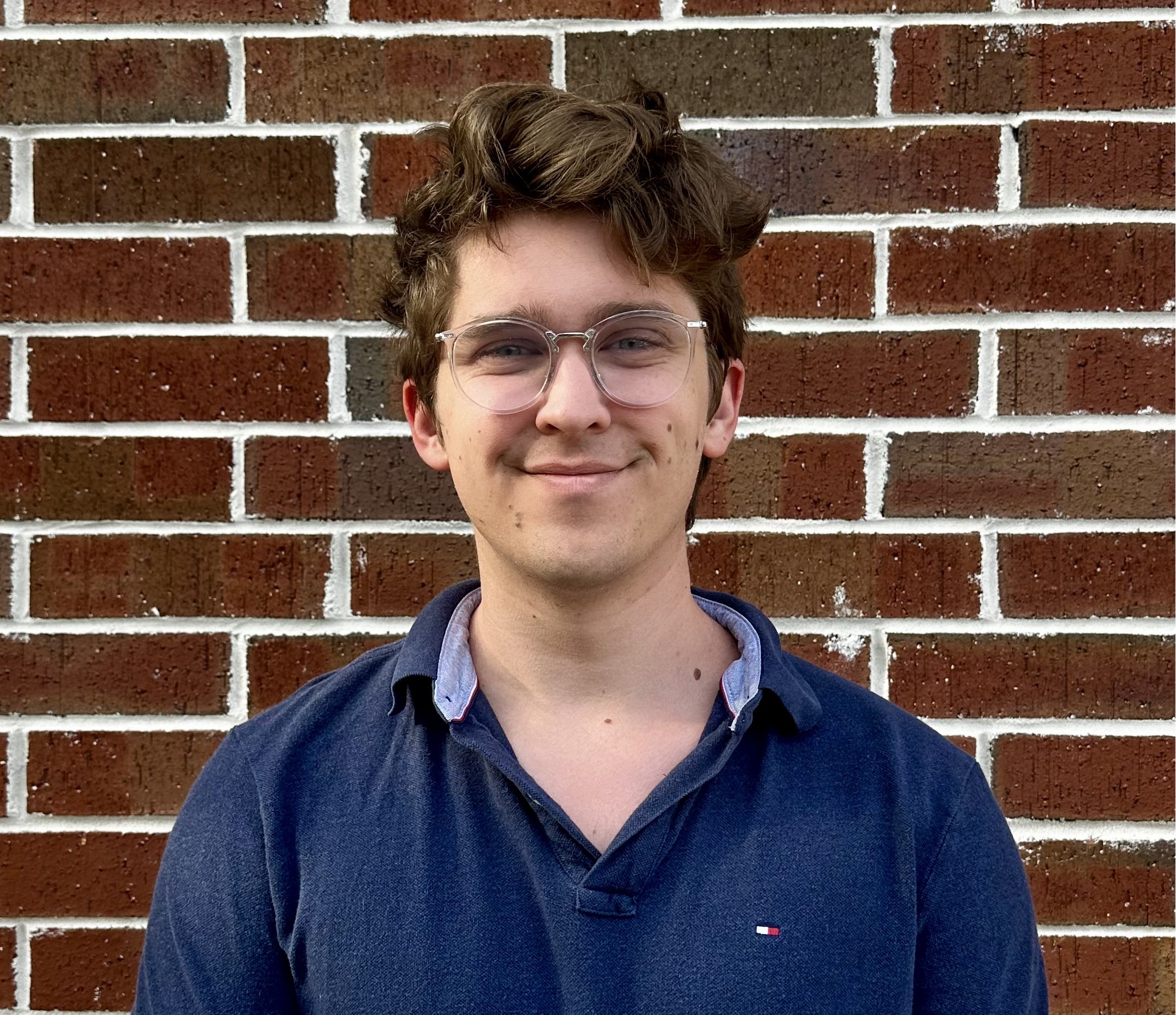
BIO
I am a senior majoring in psychology with a strong interest in understanding academic outcomes in children, particularly how learning disorders impact their educational trajectories. My research focuses on how different domains of conditions such as ADHD and ODD can be identified from different reporters and how they influence these academic outcomes. In my time in undergraduate studies, I have gained experience in psychological research, developing skills in data analysis, and behavioral assessment. I have also worked closely with faculty on projects related to child development and learning disabilities, further deepening my passion for clinical research. After completing my undergraduate degree, I plan to pursue a Ph.D. in Clinical Psychology, where I aim to continue researching the intersection of learning disorders and academic success. My goal is to contribute to evidence-based interventions that improve educational experiences for children with learning challenges, ultimately fostering a more inclusive and supportive learning environment.
The Effects of Psychosocial Interventions on Academic Outcomes For Children With ADHD
Authors: Jack Irvin, Christopher J. Lonigan PhD.Student Major: Psychology
Mentor: Christopher J. Lonigan PhD.
Mentor's Department: Department of Psychology Mentor's College: College of Arts and Sciences Co-Presenters: N/A
Abstract
Attention Deficit-Hyperactivity Disorder (ADHD) is one of the most common behavioral disorders in children, affecting 5-10% of school-aged children in the United States. ADHD symptoms include problems of inattention, hyperactivity/impulsivity, and lack of organization. Common treatments for ADHD include psychopharmacological and psychosocial intervention. An ADHD diagnosis, as well as an elevation of constituent symptoms, are also associated with negative effects in other domains such as social and academic achievement. Studies suggest the use of stimulant medication has a limited effect on academic outcomes. Previous studies have explored the effects of ADHD on academic outcomes, but academic outcomes are defined broadly ranging from academic productivity to scores of standardized assessments of academic skills. This study was a meta-analysis/best-evidence synthesis of studies of psychosocial treatments for ADHD that included an academic outcome. A PsychINFO search identified 946 studies. This pool of studies was refined systematically by screening titles, abstracts, and then full text of studies, The resultant 13 studies were combined with seven studies summarized by a prior meta-analysis (Daley et al., 2014). Interventions in these studies were classified as executive-function training (n=13), behavior modeling (n=3), and daily report cards (n = 9). Academic outcomes were classified as teacher reports (n=14), direct assessment of children's academic skills (n = 4), and grade point averages (n=2). Results of these 20 studies indicated that there was no strong level of evidence for a relation between these psychosocial interventions and children’s academic outcomes.
Keywords: Children, Academic Outcomes, Interventions
25th annual Undergraduate Research Symposium, April 1, 2025
Jenna Jones Poster Session 4: 3:00 pm - 4:00 pm/ Poster #102
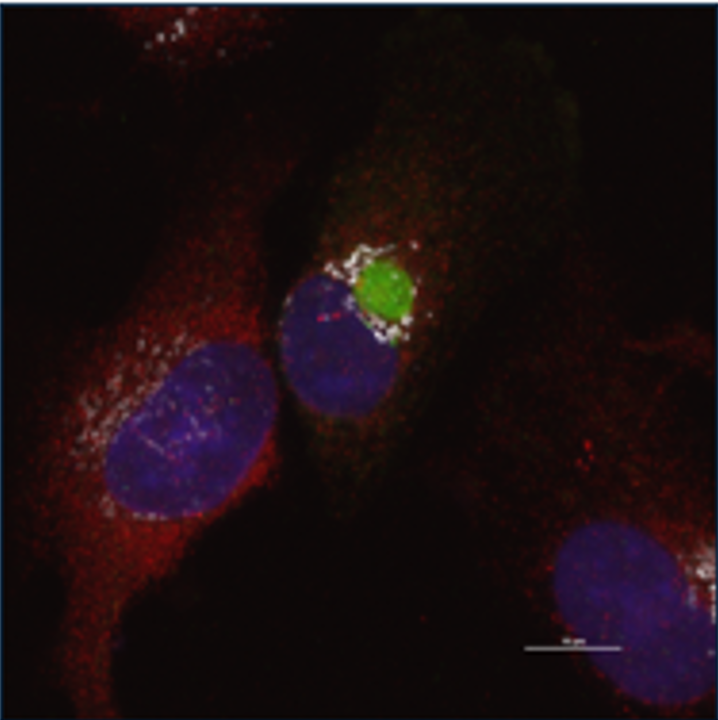
BIO
My name is Jenna, I am a second year student majoring in Biology on a pre-med track.
Zika virus NS3 drives the assembly of a viroplasm-like structure
Authors: Jenna Jones, Tania SultanaStudent Major: Biological Science
Mentor: Tania Sultana
Mentor's Department: Biomedical Sciences Mentor's College: Arts and Science Co-Presenters:
Abstract
Zika virus (ZIKV), a mosquito-borne flavivirus, caused global concern in 2015–2016 due to its link to fetal brain defects. With no vaccine available, understanding its replication is critical. ZIKV's genome is a positive-sense single-strand RNA. That encodes 10 proteins: 3 structural and 7 nonstructural. Upon infection, ZIKV forms a replication organelle (viroplasm) by remodeling the host cell’s endoplasmic reticulum, though the proteins responsible remain unknown.
This study identifies non-structural protein 3 (NS3) as sufficient to drive viroplasm-like structure (VLS) formation in human cells. The VLS mimics the native viroplasm, assembling near centrosomes, deforming the nuclear membrane, and recruiting the ER, Golgi, and dsRNA. It also associates with microtubules. Our results show that the helicase domain, not the protease domain, is essential for VLS assembly and dsRNA recruitment.
By revealing NS3’s role in ZIKV viroplasm formation, this research enhances understanding of ZIKV replication and may provide insights into other flaviviruses.
Keywords: viroplasm, zika, virus
25th annual Undergraduate Research Symposium, April 1, 2025
Alden Vega Poster Session 1: 9:30 am - 10:30 am/ Poster #2
BIO
Hello! I am a sophomore majoring in Behavioral Neuroscience on the pre-dental track at Florida State University. I am originally from Gainesville, FL and love everything about FSU! Academically, my interests include neuroscience, healthcare, and the intersection of technology and society. Outside of academics, I enjoy powerlifting, reading, and spending time with friends and family. After graduation, I plan to pursue dental school and integrate my knowledge of behavioral science and technology to enhance patient care.
AI: Friend, Foe, or Future? A Review of Attitudes and Perceptions of AI
Authors: Alden Vega, Hailey KuangStudent Major: Behavioral Neuroscience
Mentor: Hailey Kuang
Mentor's Department: Statistics Mentor's College: Statistics Co-Presenters: Hannah Barron
Abstract
This project explores the demographic factors associated with individuals' attitudes and
understanding of Artificial Intelligence (AI) through a literature review. We searched for
relevant studies using keywords such as "AI trust," "AI attitudes," and "AI anxiety." After
applying inclusion and exclusion criteria, we identified the five most relevant papers. The
findings indicate that age, gender, and educational background are key demographic
factors linked to AI attitudes. For example, Schepman and Rodway (2022) found that
men and younger individuals tend to hold more positive views of AI. By highlighting these
demographic trends, our review underscores the need to account for these factors when
developing surveys and conducting further research into public perceptions of AI
Keywords: Artificial Intelligence, AI literacy, AI attitudes, demographics
25th annual Undergraduate Research Symposium, April 1, 2025
Elizabeth Hogan Poster Session 3: 1:45 pm - 2:45 pm/ Poster #77
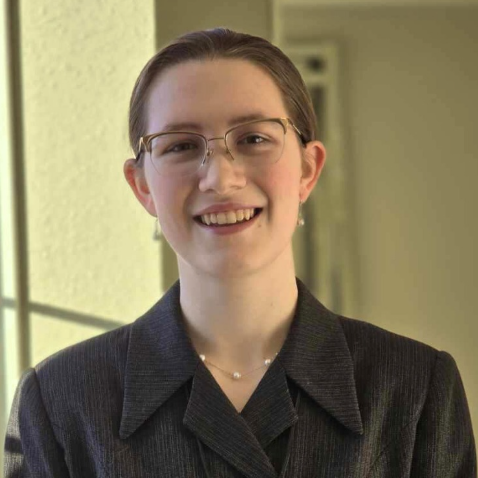
BIO
My name is Elizabeth Hogan and I am currently a freshman pursuing a biochemistry major at Florida State University.
The Effect of RNAi Knockdown of atfs-1, hsp-6, dpy-30, set-25, and C47E12.2 on C. elegans Early Brood Count
Authors: Elizabeth Hogan, Dr. Amy WebsterStudent Major: Biochemistry
Mentor: Dr. Amy Webster
Mentor's Department: Department of Biological Science Mentor's College: Florida State University Co-Presenters:
Abstract
Caenorhabditis elegans is a species of nematode that is often used as a model species in genetic research. In order for a model species to be useful in research, it is crucial that as much information as possible is known about that species. This experiment seeks to answer the question of how five specific genes, namely C47E12.2, atfs-1, hsp-6, set-25, and dpy-30, influence the early reproduction of C. elegans. In order to answer this question, RNA interference through feeding was performed on C. elegans nematodes in order to knock down the expression of each gene individually. The results of this experiment showed a significant decrease in early brood count for all five experimental genes with hsp-6 being highly significant. In addition, it was found that high embryonic and developmental lethality was part of the reason for the low early brood count for hsp-6. Lastly, it was found that there is no significant difference between the early brood counts of early L4 stage and late L4 stage nematodes treated with hsp-6 RNAi when compared to a control condition. These findings set the stage for further research into the role of hsp-6 in C. elegans reproduction.
Keywords: C. elegans, RNAi, early brood
25th annual Undergraduate Research Symposium, April 1, 2025
Joud Kurdi Poster Session 3: 1:45 pm - 2:45 pm/ Poster #129
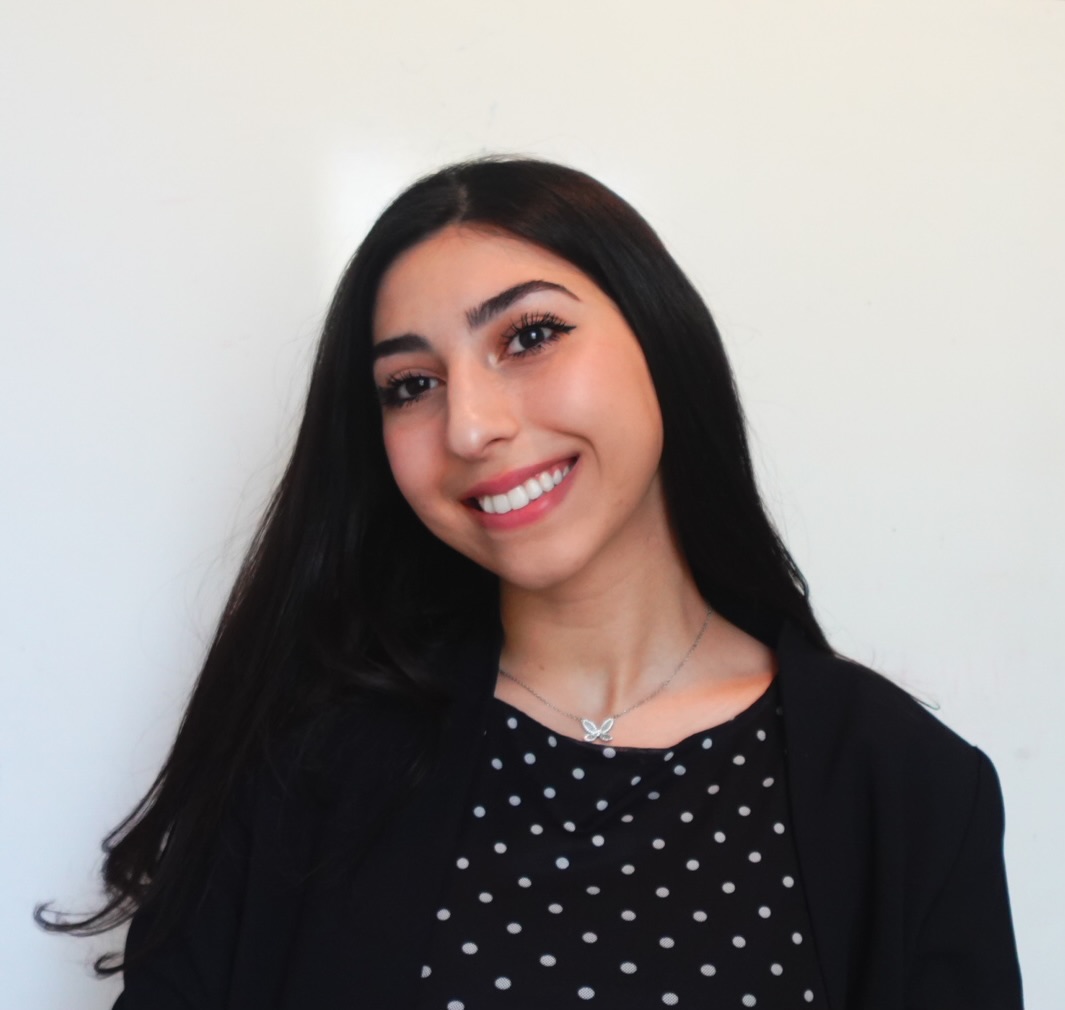
BIO
Hi! My name is Joud Kurdi, and I’m a junior at Florida State University majoring in Biology with a minor in Chemistry on the pre-med track. I currently work as a Patient Care Assistant in the Cardiac Care Unit at Tallahassee Memorial Hospital, and I also serve as a Teaching Assistant for Biology for Non-Majors. I’m passionate about surgery and excited to pursue a career in medicine, especially one that allows me to work closely with underserved communities. Outside of academics, I love to paint, volunteer, and spend time at the gym, it’s how I stay maintain a balanced and creative mind in the midst of a busy schedule.
Characterization of Potential G-Quadruplex (G4)-Binding Proteins
Authors: Joud Kurdi, Hank BassStudent Major: Biological Science
Mentor: Hank Bass
Mentor's Department: Biological Sciences Mentor's College: Florida State University Co-Presenters:
Abstract
G-quadruplexes (G4s) are unique, four-stranded secondary DNA structures that form in guanine-rich genomic regions. They play important roles in gene regulation and genome stability. G4s appear to regulate maize genes, suggesting potential agricultural significance. We suspect our antibody, which we refer to as “G4X,” should have G4-DNA-binding activity. The G4-binding proteins, like the G4X, are antibodies designed to recognize G4 structures selectively, facilitating their detection and isolation in biological systems. This study tested how well G4X can bind to G4 DNA using immunodepletion with G4-forming oligonucleotides and magnetic beads. We investigated how different concentrations of G4X affected DNA capture efficiency. G4X was also used for cellular staining, allowing visualization of G4 structures within a biological context.
Keywords: G4-quadruplexes, DNA–protein interactions
25th annual Undergraduate Research Symposium, April 1, 2025
Juan Tuta Poster Session 3: 1:45 pm - 2:45 pm/ Poster #121
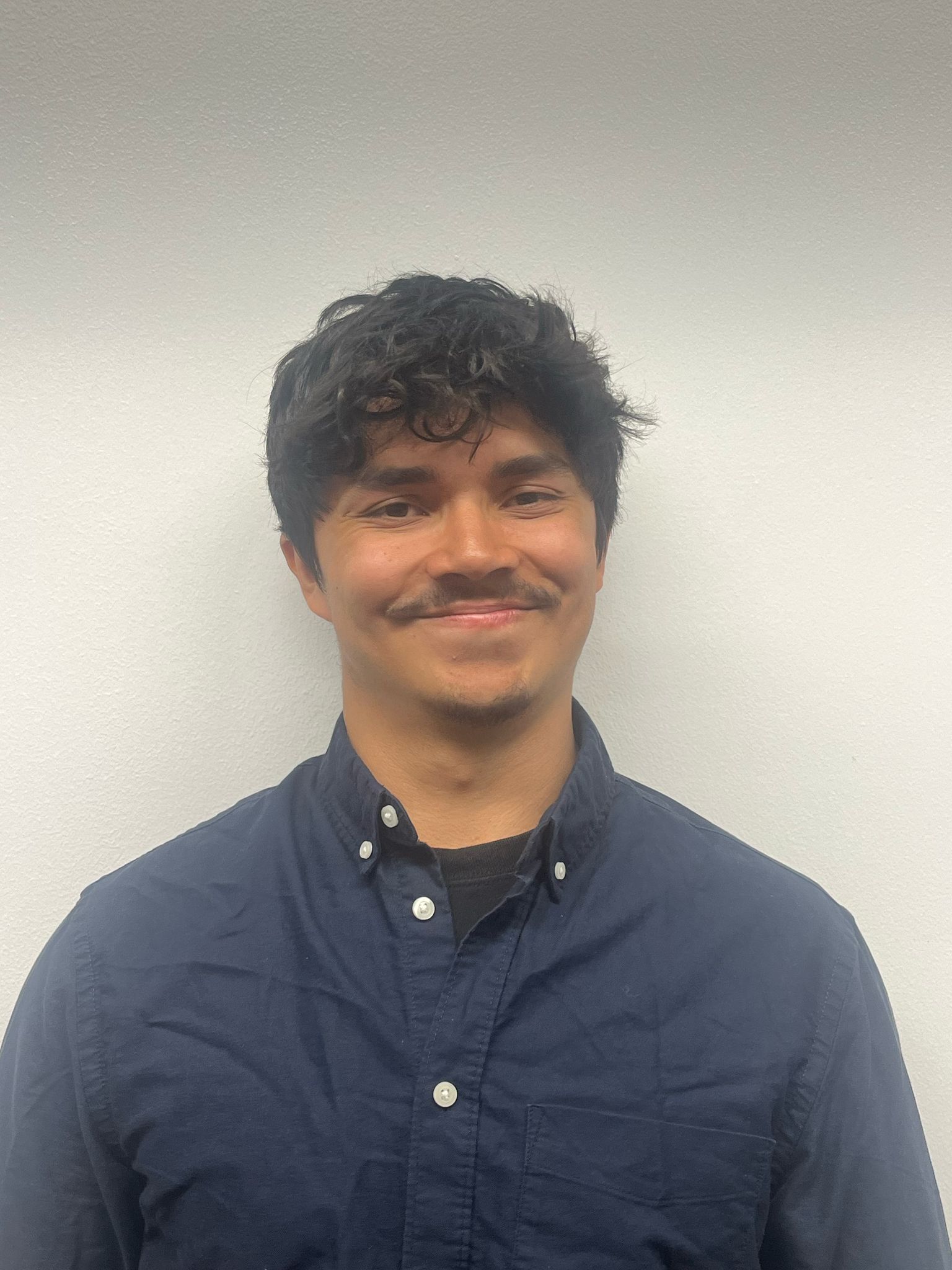
BIO
I am a Behavioral Neuroscience major raised in Colombia. I am currently a freshman at FSU and aside from UROP I am also involved with the Neuroscience undergraduate club and volunteering in a project about the correlation of decaying spatial orientation skills and the development of Alzheimer's.
Representation of Women in Female-Directed Bollywood Films
Authors: Juan Tuta, Rebecca PetersStudent Major: Behavioral Neuroscience
Mentor: Rebecca Peters
Mentor's Department: College of Arts and Sciences, Religion Mentor's College: Florida State University Co-Presenters: Anthony Lee
Abstract
The Bollywood film industry has been male-dominated for many decades, with female actors receiving much less representation. This project focuses on whether or not women directors impact the representation of women characters in their films. This is crucial in determining what having a woman in the role of a director can have on a film and the representation of women that are in the films. The research analyzes Bollywood films that are directed by women. To identify the number and quality of female characters, a method called “film coding” is used. This is done by watching the films closely and marking certain criteria that relate to each female character's portrayal. Sometimes it is marked if the character does not meet this criteria. The movie is watched one time through to identify the number of speaking female characters, after this has been completed the “film coding” begins and the findings are entered into a coding survey for each character. The research remains in its initial stages, yet following the study of a few films, preliminary results hint at interesting results. They could imply that women directors can have a positive impact on the representation of women in films. If this proves to be true this could lead to a greater representation of women not only in Bollywood films but in all films.
Keywords: Bollywood female directors
25th annual Undergraduate Research Symposium, April 1, 2025
Abigail Goering Poster Session 1: 9:30 am - 10:30 am / Poster #75

BIO
I am a psychology major with a primary focus on social psychology. Although my academic background is in psychology, my UROP research centers on policy analysis. Specifically, I am involved in a project examining parental leave policies at universities. We evaluate each institution’s policy using a standardized rubric and analyze how these scores correlate with two key variables: the university’s ranking in U.S. News & World Report for Mechanical Engineering and the representation of tenured and tenure-track women faculty within their Mechanical Engineering departments.
Evaluating Family Leave Policies in University STEM Departments
Authors: Abigail Goering, Taylor HigginsStudent Major: Psychology
Mentor: Taylor Higgins
Mentor's Department: Mechanical Engineering Mentor's College: College of Engineering Co-Presenters: Ethan Messier
Abstract
Persistent gender disparities exist in STEM fields, particularly in doctoral-level positions and tenured faculty representation. This research evaluates how comprehensively structured parental leave policies at universities impact the recruitment and retention of tenure-track women faculty in mechanical engineering departments. Utilizing a rubric developed to assess family leave policies across U.S. institutions, we analyzed the correlation between policy strength and two metrics: U.S. News & World Report Mechanical Engineering rankings and the percentage of tenured/tenure-track women in these departments. Results indicate a positive relationship between strong leave policies and higher female faculty representation, suggesting that robust family support policies may play a key role in advancing gender equity in STEM academia. Future directions include analyzing department-level trends and expanding survey efforts to better understand student and faculty experiences with family leave.
Keywords: Parental Policy Leave
25th annual Undergraduate Research Symposium, April 1, 2025
Gabriela Lopez-de Cespedes Poster Session 3: 1:45 pm - 2:45 pm/ Poster #90

BIO
I am from Miami, Florida and I am an undergraduate student from the class of 2027 studying English Literature with a minor in Chemistry.
Dante Today: An Archive of Sightings of Dante in Contemporary Culture
Authors: Gabriela Lopez-de Cespedes, Elizabeth CoggeshallStudent Major: English Literature
Mentor: Elizabeth Coggeshall
Mentor's Department: Modern Languages and Linguistics Mentor's College: Florida State University, formerly Stanford University Co-Presenters:
Abstract
In 2006, upon teaching her “Dante’s Divine Comedy” course, Arielle Saiber (Johns Hopkins University, formerly Bowdoin College) found that the students repeatedly approached her with a curious array of findings. The students had found numerous references to Dante and his works, which inspired Arielle Saiber to create the site. The site was created as a way of digitally archiving these sightings of Dante’s works, but its purpose evolved to include further goals. As stated on Dante Today, the goal of creating such an expansive digital archive is not only to record Dante's presence in contemporary culture, but to provide this data to others. The project reached Florida State University through Elizabeth Coggeshall (Florida State University, formerly Stanford University). Elizabeth Coggeshall is the co-editor of the website, and her studies specialize in Italian literature and culture, including the Italian writer and poet Dante. She began collaborating with Arielle Saiber as co-editors of Dante Today in 2012. Over this time, Dante Today has become brilliantly saturated with over 2,000 sightings collected. Sightings are sorted according to an expansive tagging system, as well as according to their location, language and other key identifiers. Dante Today acts as a multimedia archive of the way in which Dante’s writing has evolved to encompass different modern and historical narratives, indicating the way in which Dante’s works have been adapted by the world. This website is continuously being updated and can be explored by both seasoned scholars of Dante and students who are first learning of Dante.
Keywords: dante literature archive inferno
25th annual Undergraduate Research Symposium, April 1, 2025
Bella Jordan Poster Session 3: 1:45 pm - 2:45 pm/ Poster #110
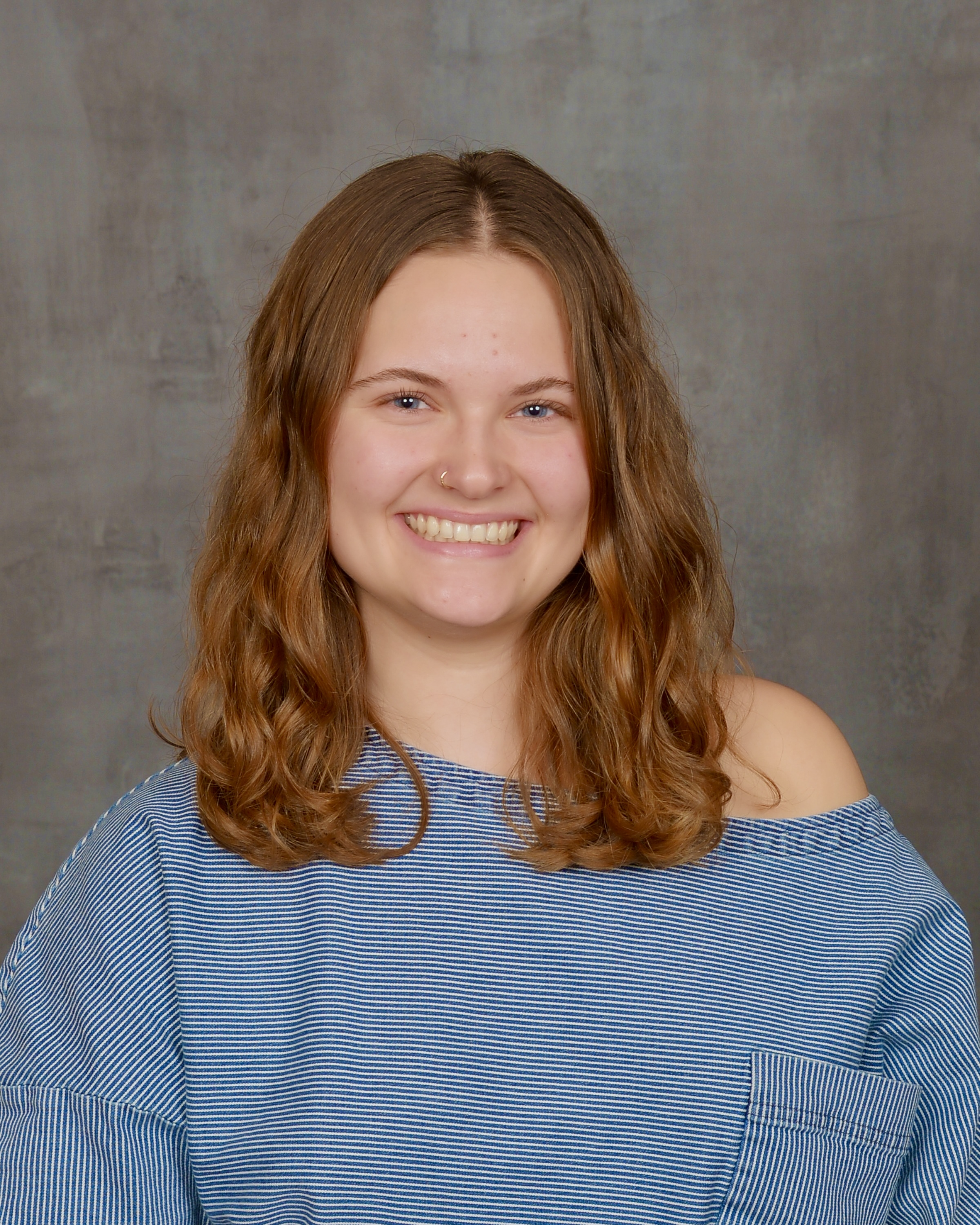
BIO
My name is Bella Jordan, and I am from West Palm Beach, Florida. I am currently a sophomore at Florida State University in the honors program, majoring in music therapy and pursuing minors in psychology and child development. After completing my undergraduate degree, I aspire to attend graduate school for music therapy. As of now, I have a few preferred populations in mind, but I am currently leaning toward working in childhood mental health.
Music Therapy and Infection Prevention and Control
Authors: Bella Jordan, Dr. Lori F. GoodingStudent Major: Music Therapy
Mentor: Dr. Lori F. Gooding
Mentor's Department: Music Therapy Mentor's College: College of Music Co-Presenters:
Abstract
Infection prevention and control are important practices that can prevent the spread of infection, ultimately saving lives and reducing healthcare costs. Awareness and use of infection prevention and control practices in music therapy have increased since the COVID-19 pandemic. However, the existing information about infection control in the music therapy profession is unclear. The purpose of this scoping review is to explore what information, including key characteristics, has been reported in the music therapy literature related to infection prevention and control. In the initial search, four databases and nine journals were searched, resulting in 397 texts screened for inclusion. Of those, 56 met the inclusion criteria. Common themes included compliance/safety, COVID-19, and the impact of infection prevention and control on music therapy services and research. In the current search, five databases and seven journals were searched, resulting in 166 texts screened for inclusion. The study is currently in the process of finding which of those meet the inclusion criteria. The results are expected to suggest similar findings from the initial search, including that there is an awareness of infection prevention and control in music therapy. This review is an important first step in recognizing how music therapists incorporate infection prevention and control to cover muisc therapy education, practice, and research. Future research targeting infection prevention and control in music therapy is necessary to expand our understanding of music therapy-specific infection prevention and control procedures.
Keywords: Music Therapy, Infection Prevention, Infection Control
25th annual Undergraduate Research Symposium, April 1, 2025
Upi Shanker Poster Session 3: 1:45 pm - 2:45 pm/ Poster #252
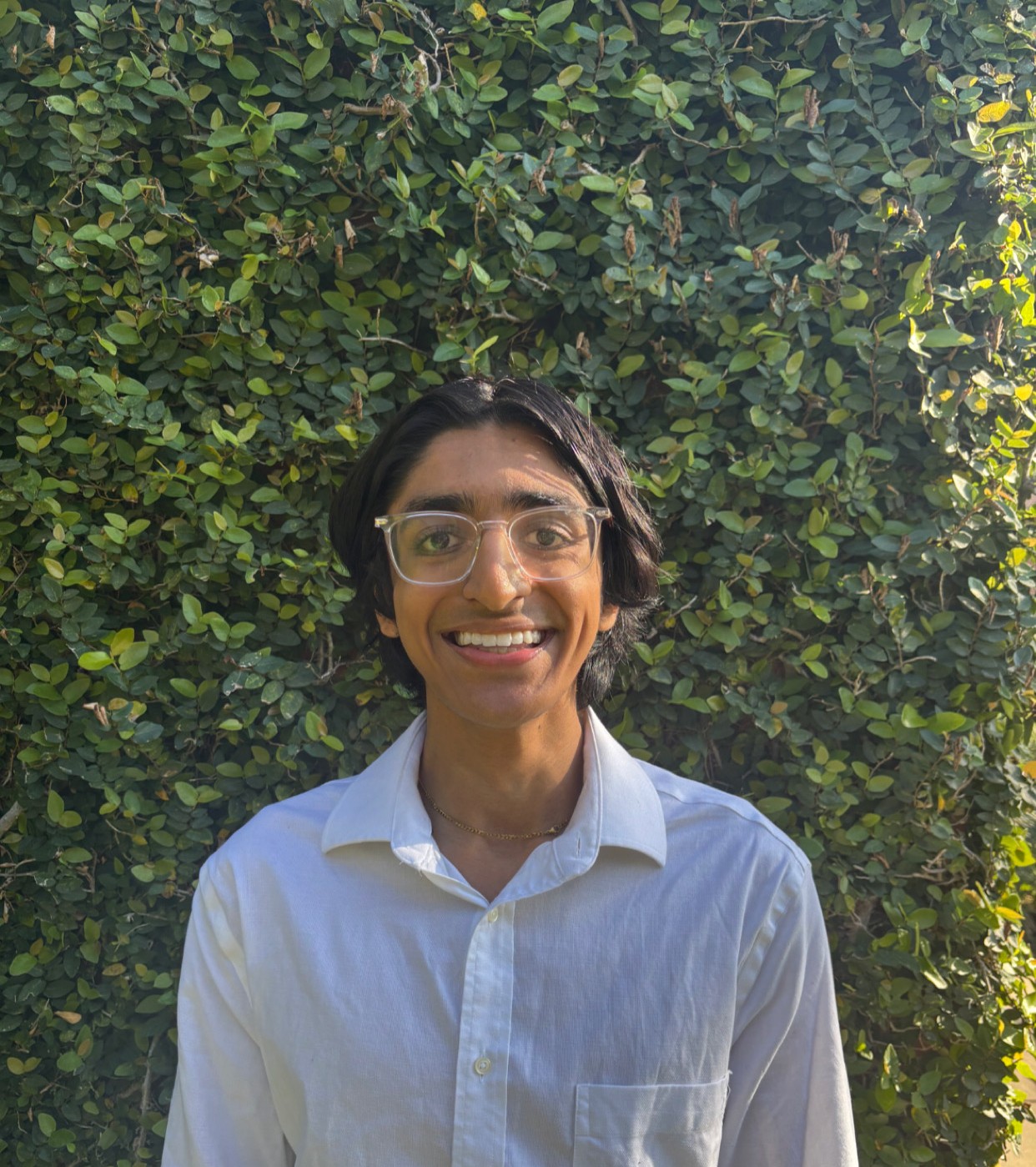
BIO
Upi Shanker is a first-year Computer Science student from Memphis, TN with research interests in artificial intelligence and promoting equity for underrepresented groups. In his free time, he enjoys exploring TV shows, movies, music, and playing basketball. Upi aims to pursue a Master's degree and become a software engineer, developing innovative solutions to improve the world.
Intersectionality of Disability and Mental Health and Career Development among Transition Youth with Disabilities in an Era of AI Technology: A Scoping Review
Authors: Upi Shanker, Shengli DongStudent Major: Computer Science
Mentor: Shengli Dong
Mentor's Department: Department of Educational Psychology and Learning Systems Mentor's College: Anne Spencer Daves College of Education, Health, and Human Sciences Co-Presenters: Frances Alicea
Abstract
University students with disabilities navigate education in environments that sometimes are not conducive to producing the best educational experiences. This systematic scoping review aimed to map out current research on the impact of artificial intelligence (AI) on university students with disabilities in academia, mental health, and the workforce. In this scoping review, AI refers to human-designed technology that mimics cognitive functions such as learning, problem-solving, and decision-making to enhance various aspects of life, including academic, social, and career domains.
Keywords: Artificial Intelligence, Education, College students with disabilities, Career readiness, Mental health and disabilities
25th annual Undergraduate Research Symposium, April 1, 2025
Samuel Camilo Poster Session 2: 10:45 am - 11:45 am/ Poster #243
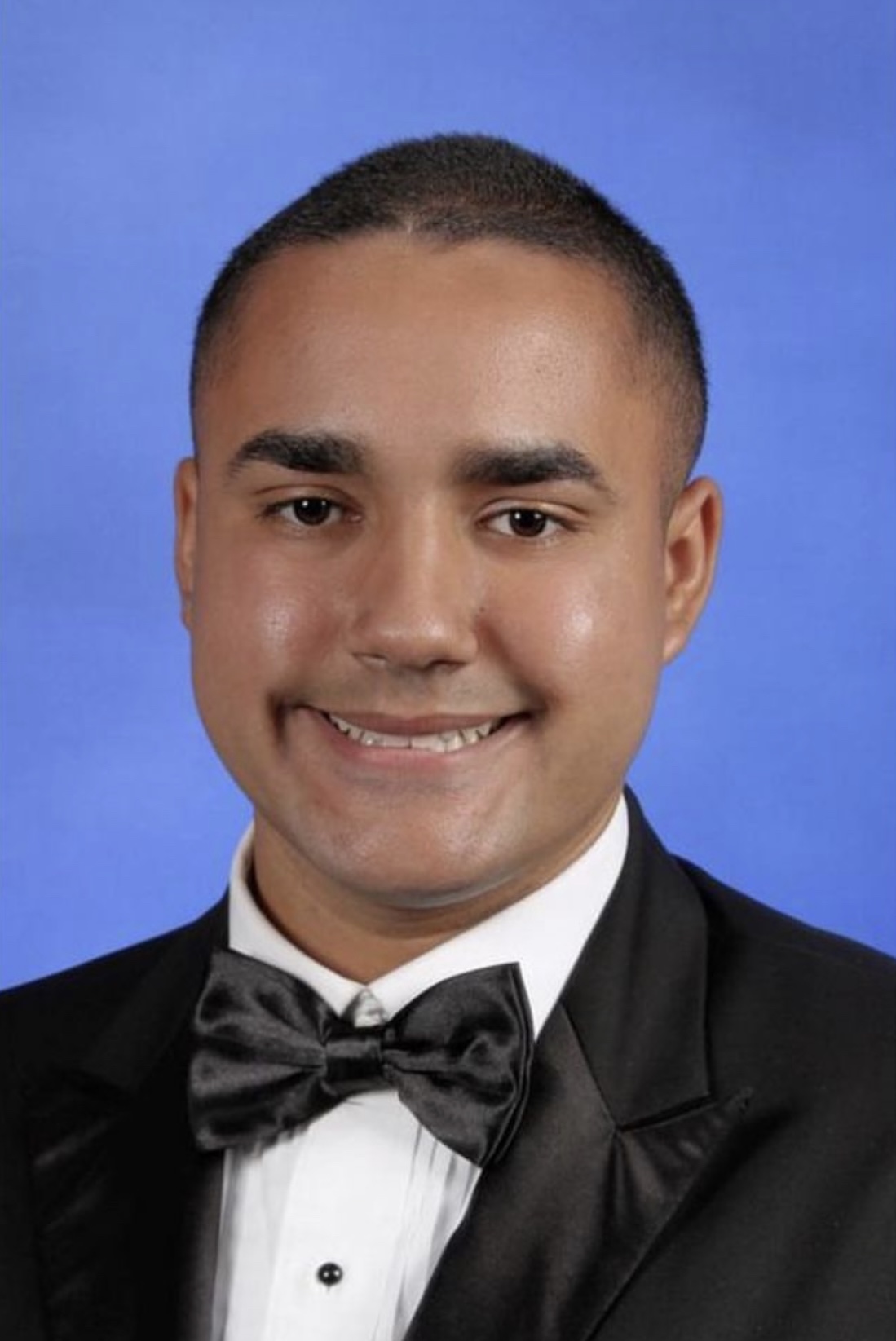
BIO
Samuel Camilo is an undergraduate student at Florida State University, studying Biological Sciences and Public Health. Originally from Miami, Florida, Samuel is interested in how biology affects health, with a focus on cell biology, cancer research, and epidemiology. Samuel's academic interests are driven by his goal to understand the biological causes of diseases and how public health systems can address these challenges. He is passionate about finding ways to improve health and well-being in communities. After completing his undergraduate studies, Samuel plans to attend medical school and hopes to become a pediatrician. His ultimate goal is to help others live healthier lives and contribute to better healthcare for young patients.
Impacts of Micro-aggressions and Implicit Bias on the Mental Health of First-Generation Minority College Students
Authors: Samuel Camilo, Shengli DongStudent Major: Biological Sciences and Public Health
Mentor: Shengli Dong
Mentor's Department: Educational Psychology and Learning Systems Mentor's College: College of Education, Health, and Human Sciences Co-Presenters:
Abstract
The number of first-generation college students – those whose parents did not complete a four-year degree – is steadily increasing. Many of these students come from racially and/or ethnically diverse backgrounds and lower socioeconomic households. As a result, they often encounter unique challenges that can impact their academic success and mental well-being. Unlike students from college-educated families, first-generation students may have less exposure to higher education expectations and fewer resources to help them navigate university life. Limited financial support and a lack of parental guidance on academic pathways can leave them feeling unprepared compared to their peers. Additionally, many first-generation students experience implicit bias and microaggressions – subtle but harmful behaviors that reinforce stereotypes and create unwelcoming environments. Research shows that these experiences contribute to higher stress levels, increased risk of depression, and lower academic performance. Understanding and addressing these challenges is crucial to fostering a more inclusive and supportive academic environment for first-generation students.
Keywords: first-generation, micro-aggressions, minorities, mental health, social support, undergraduate


